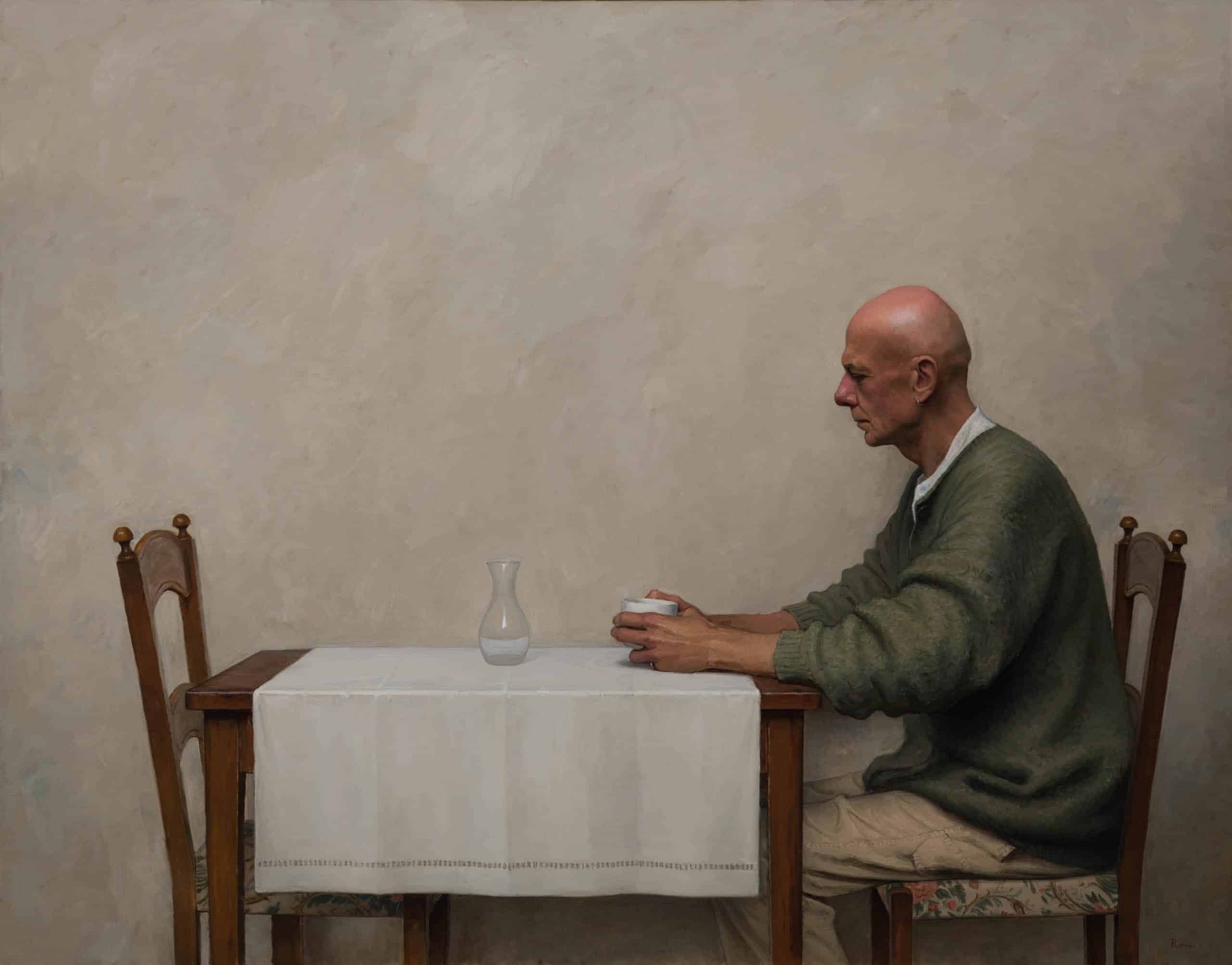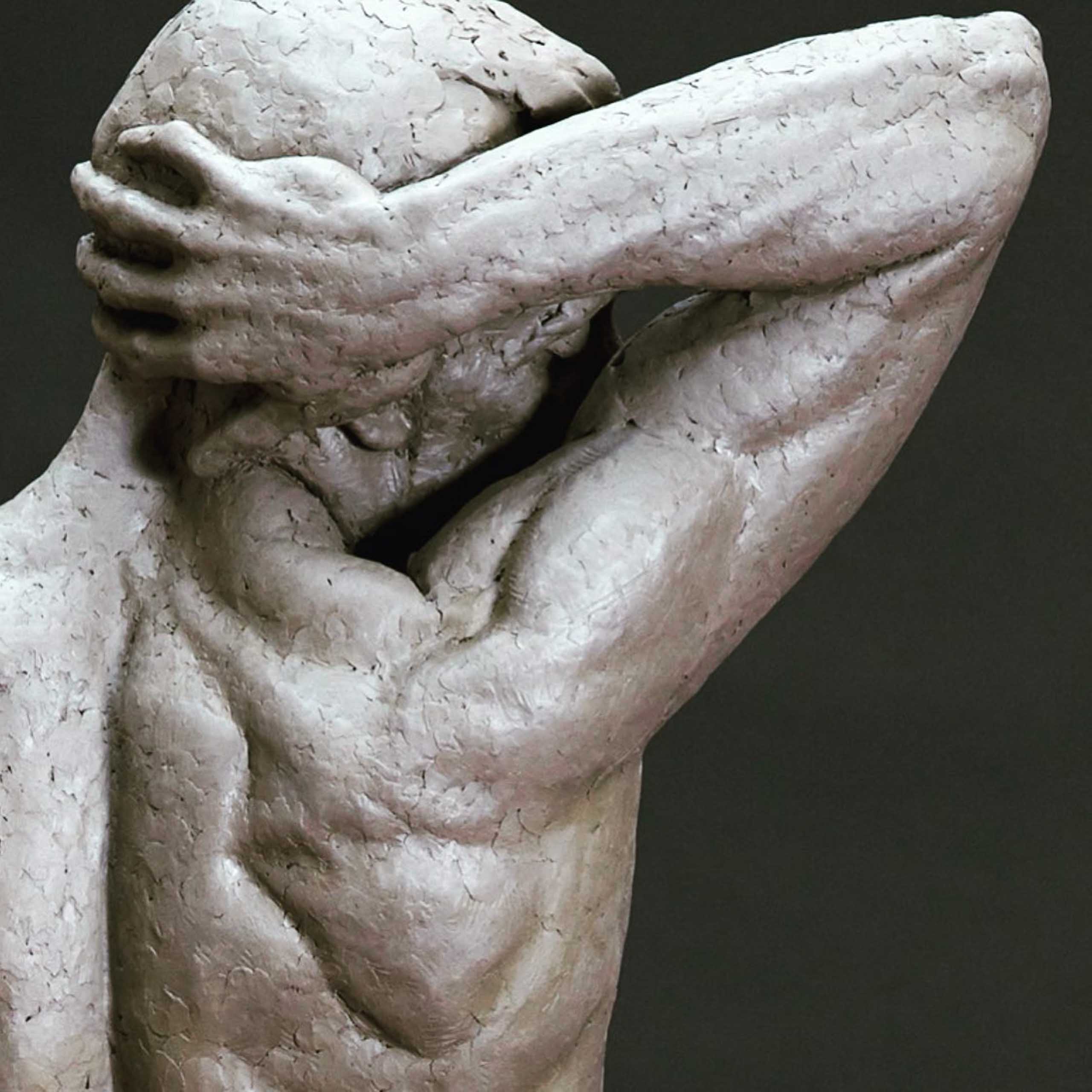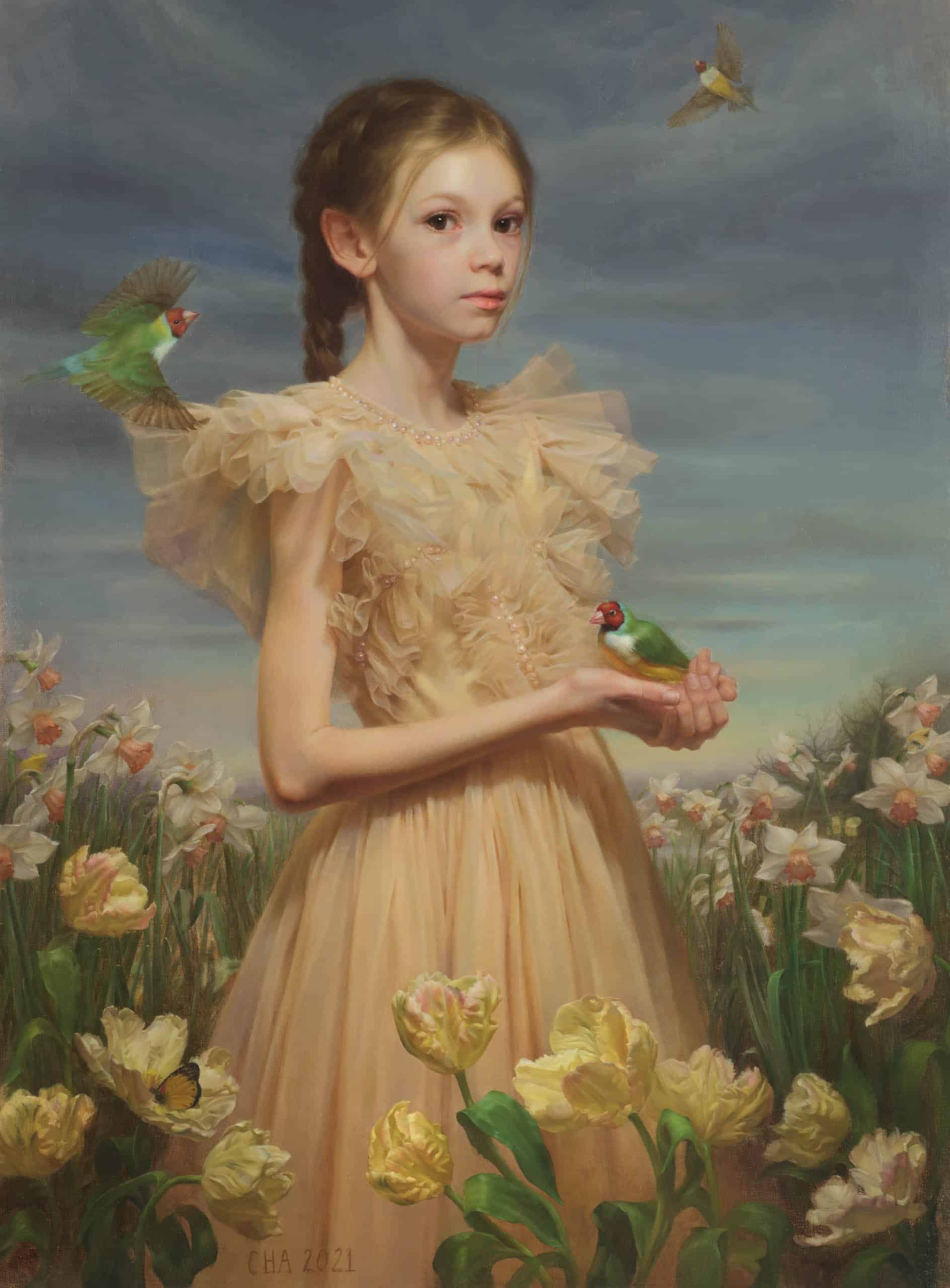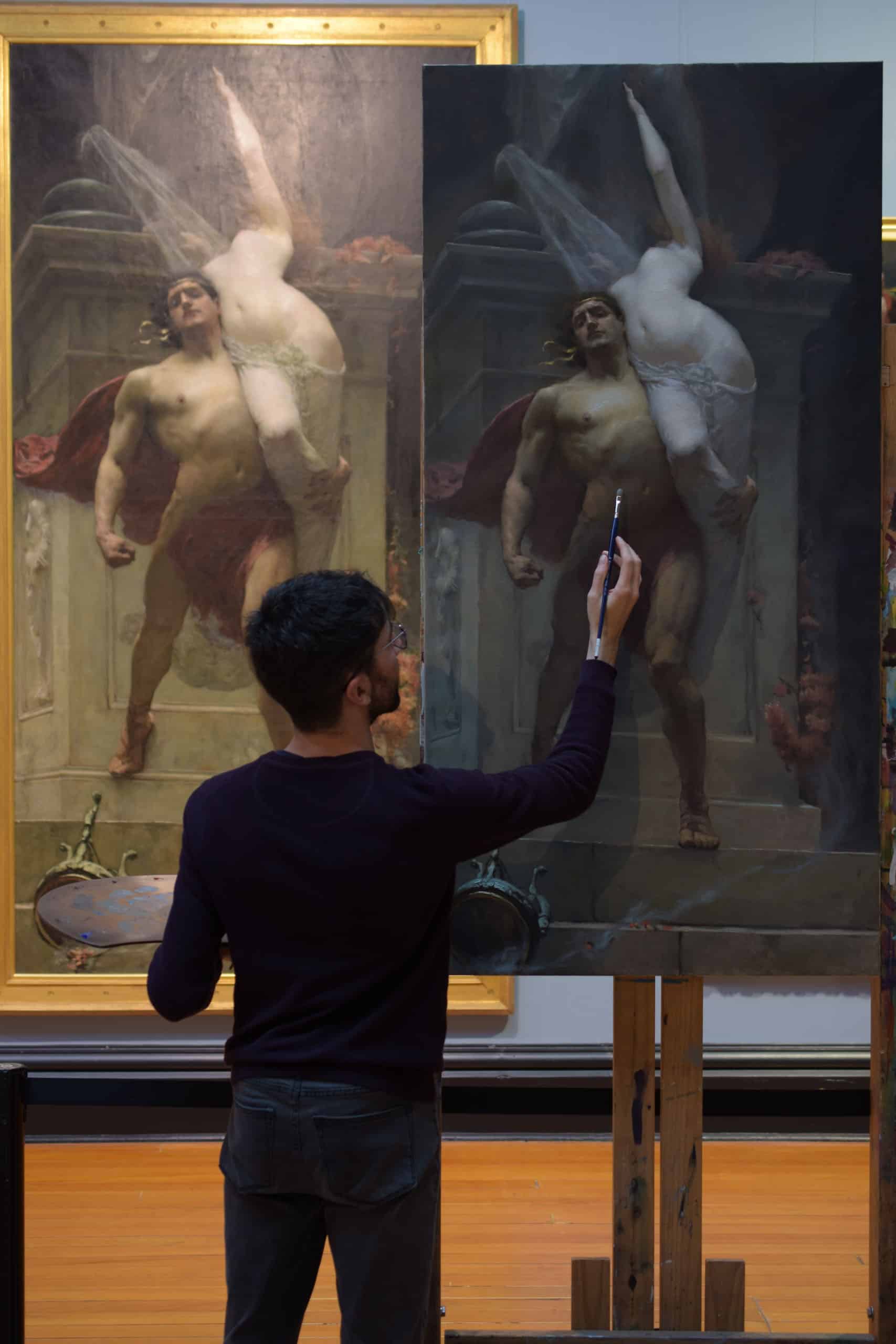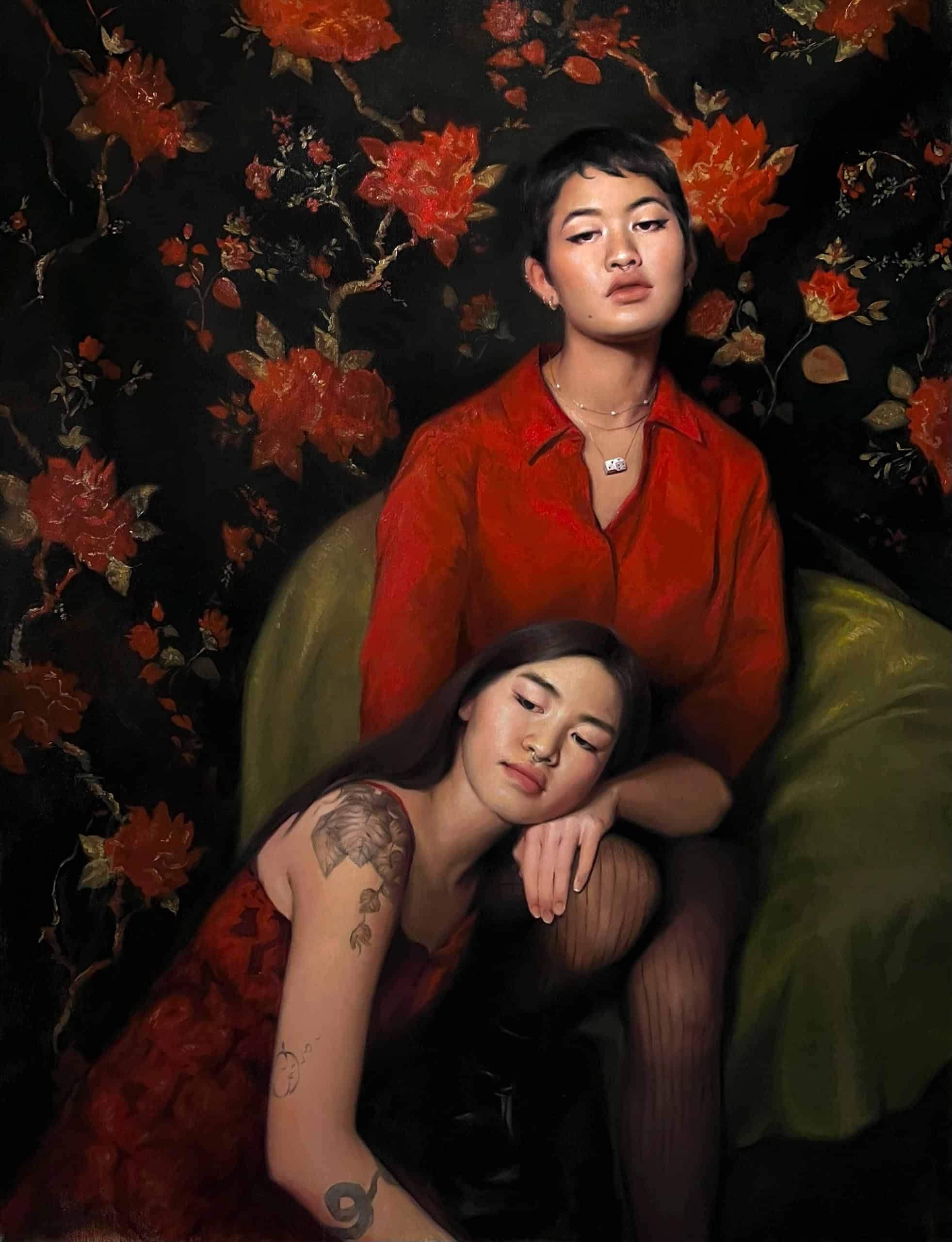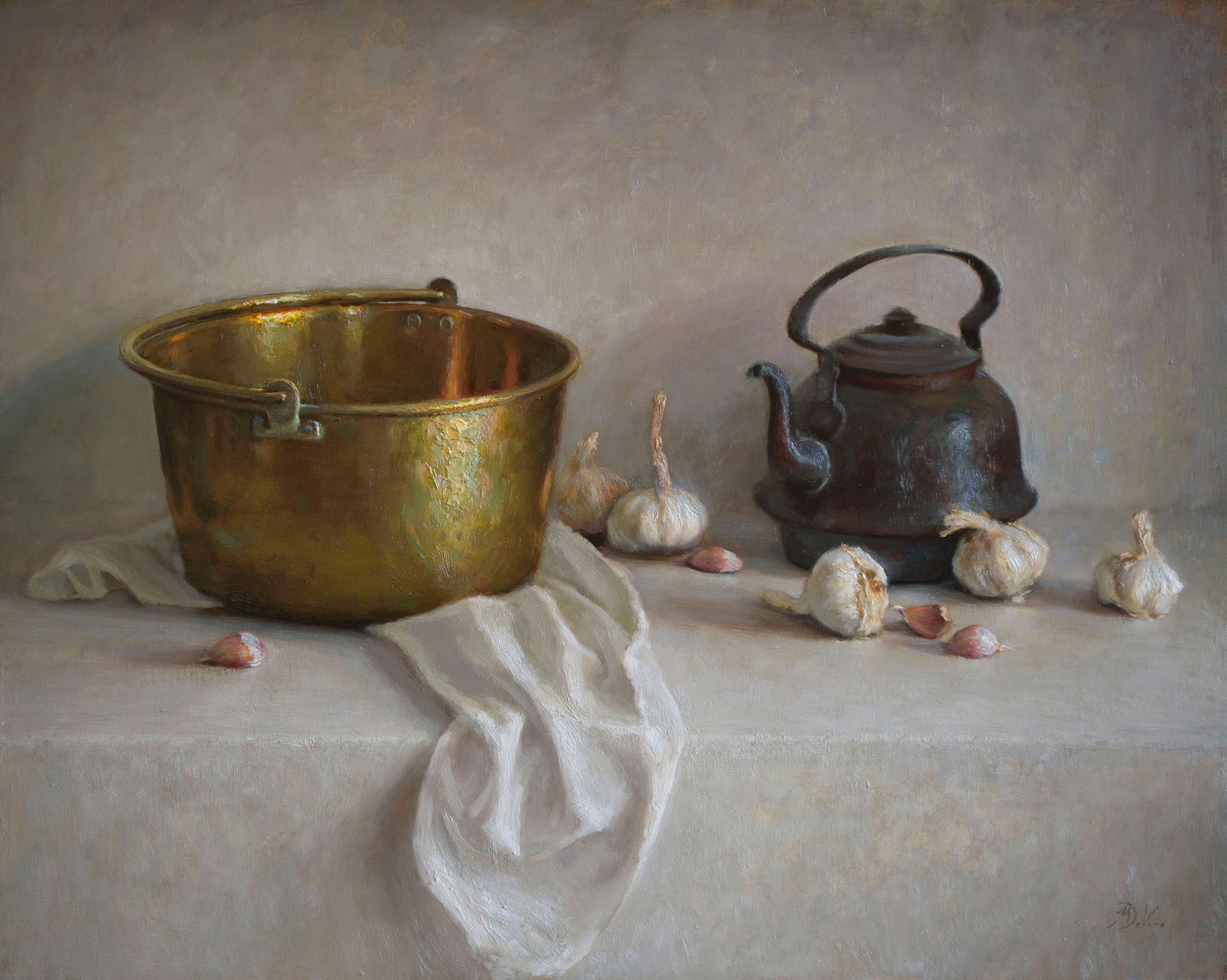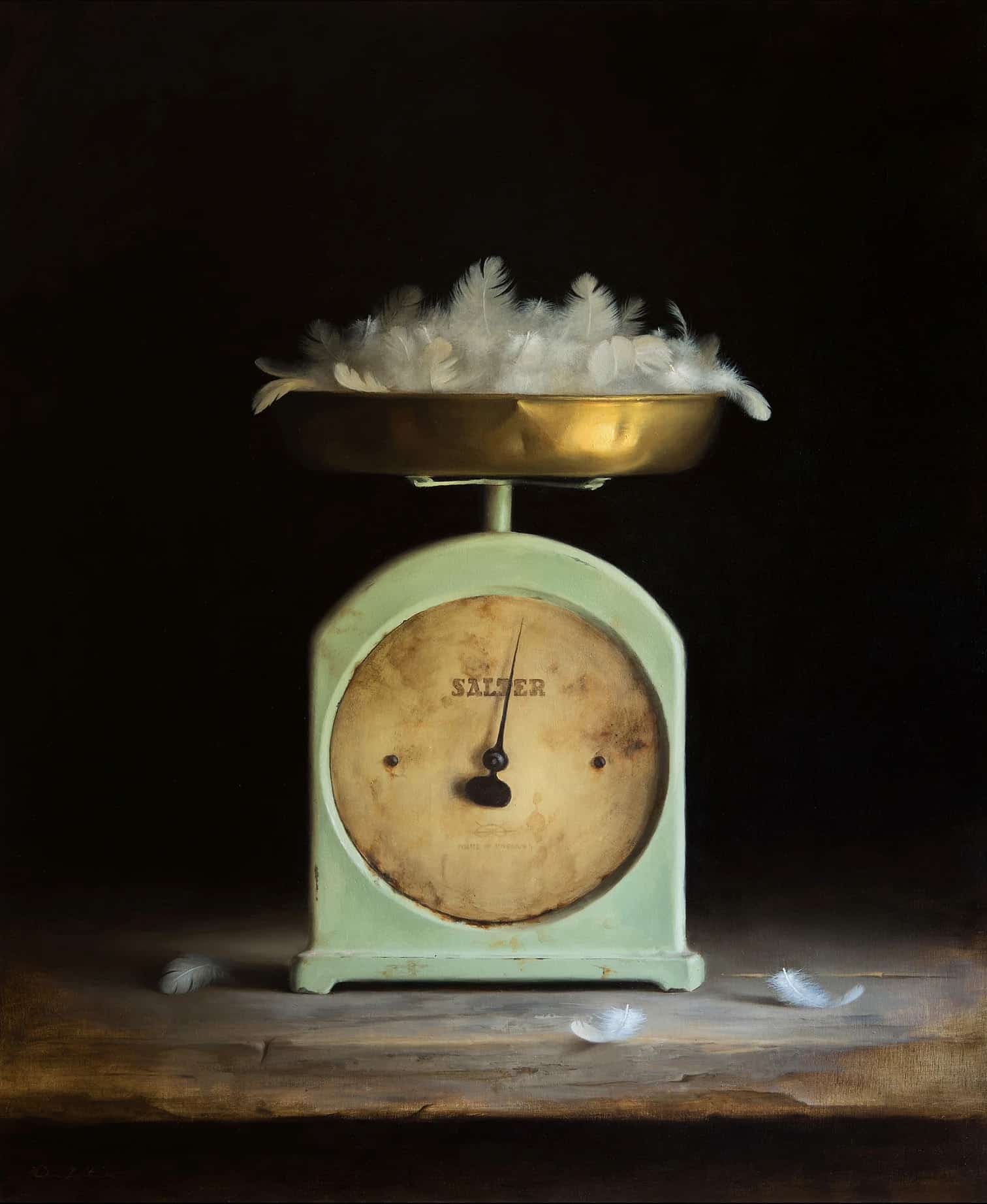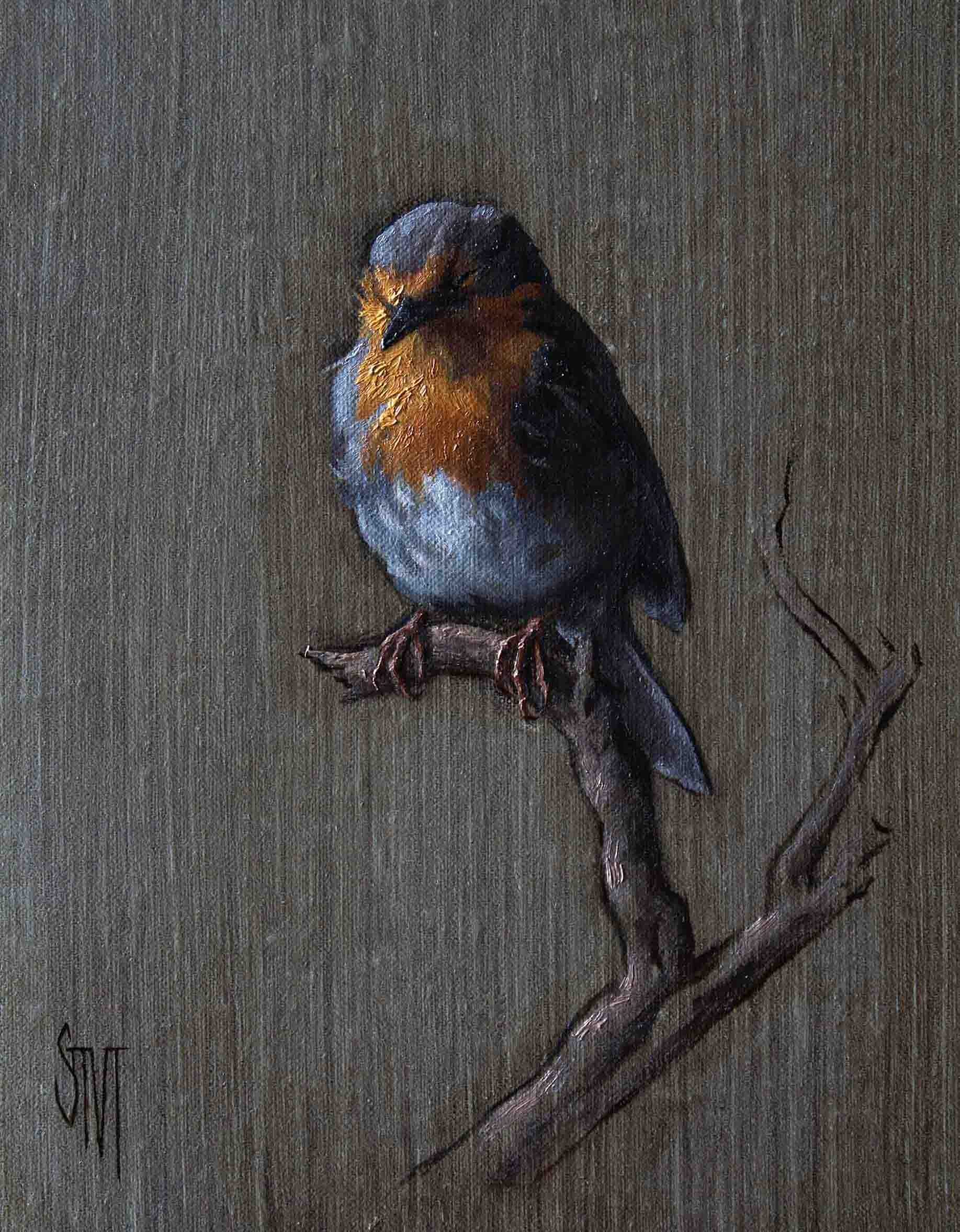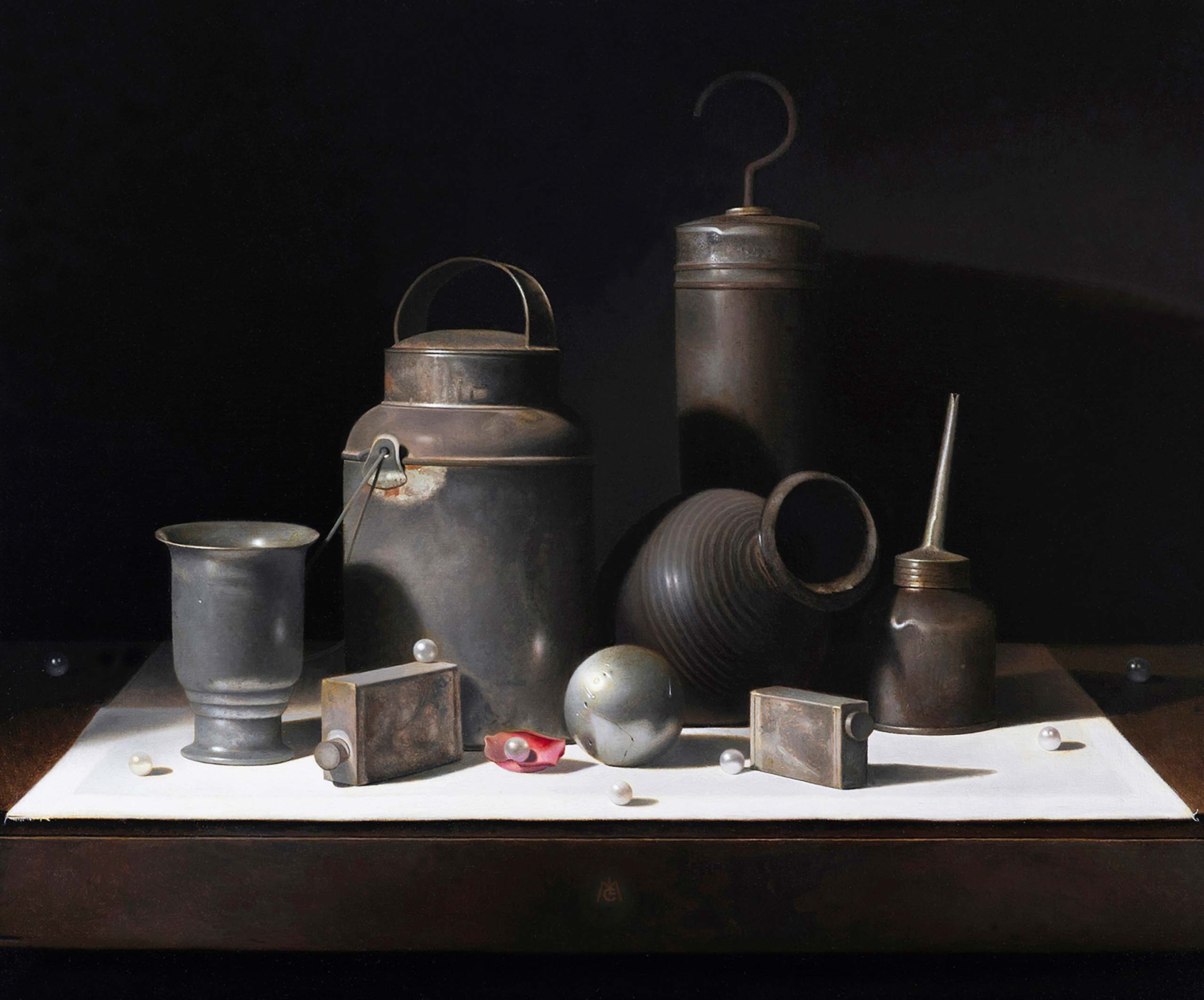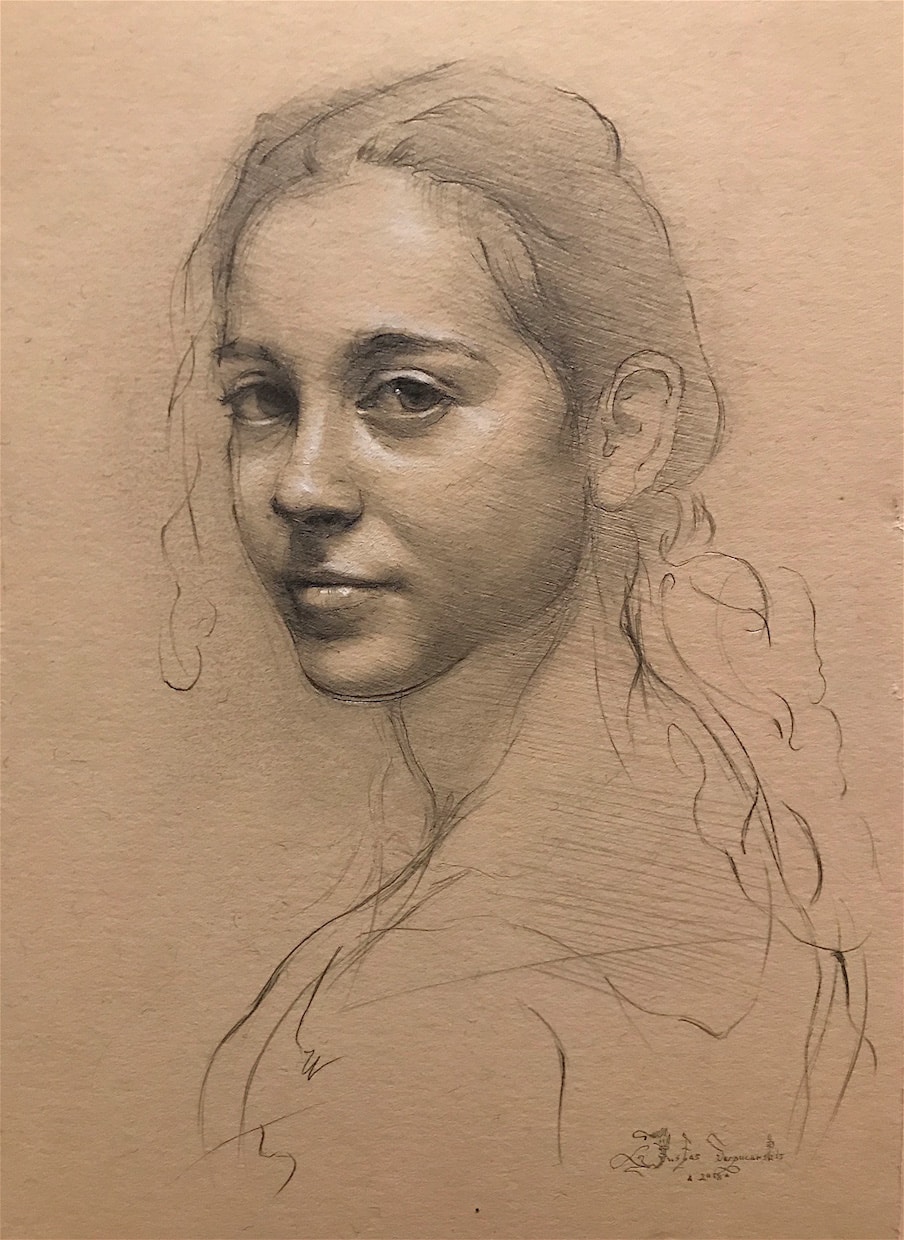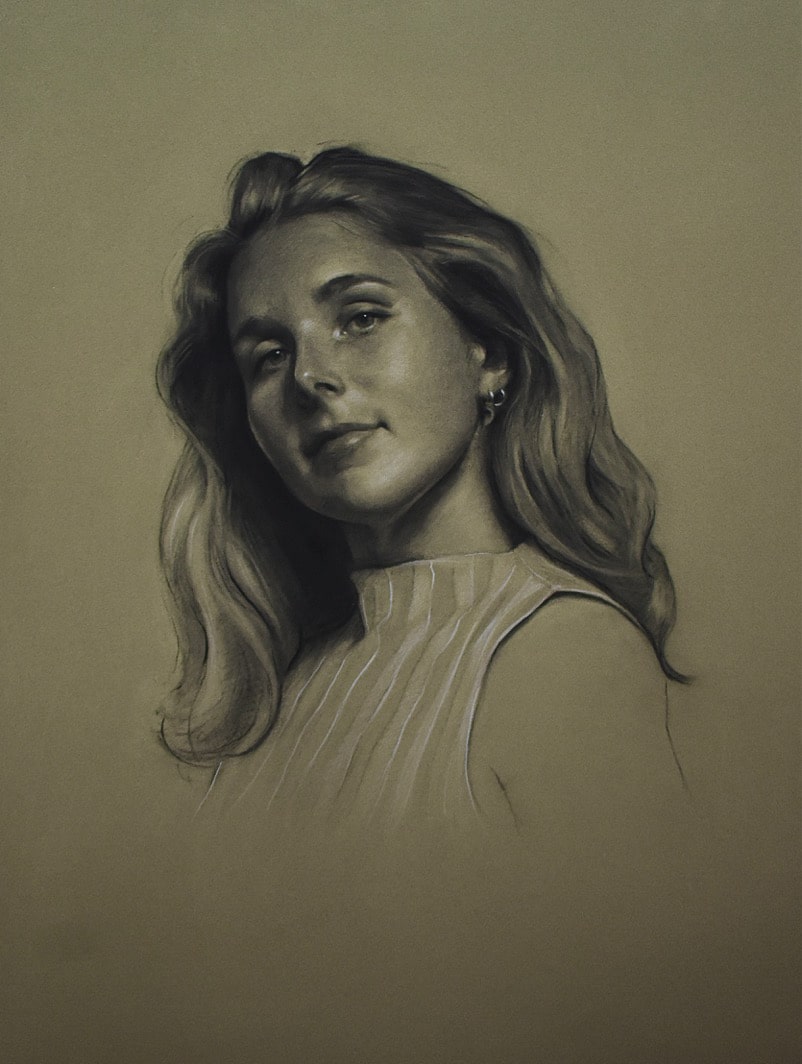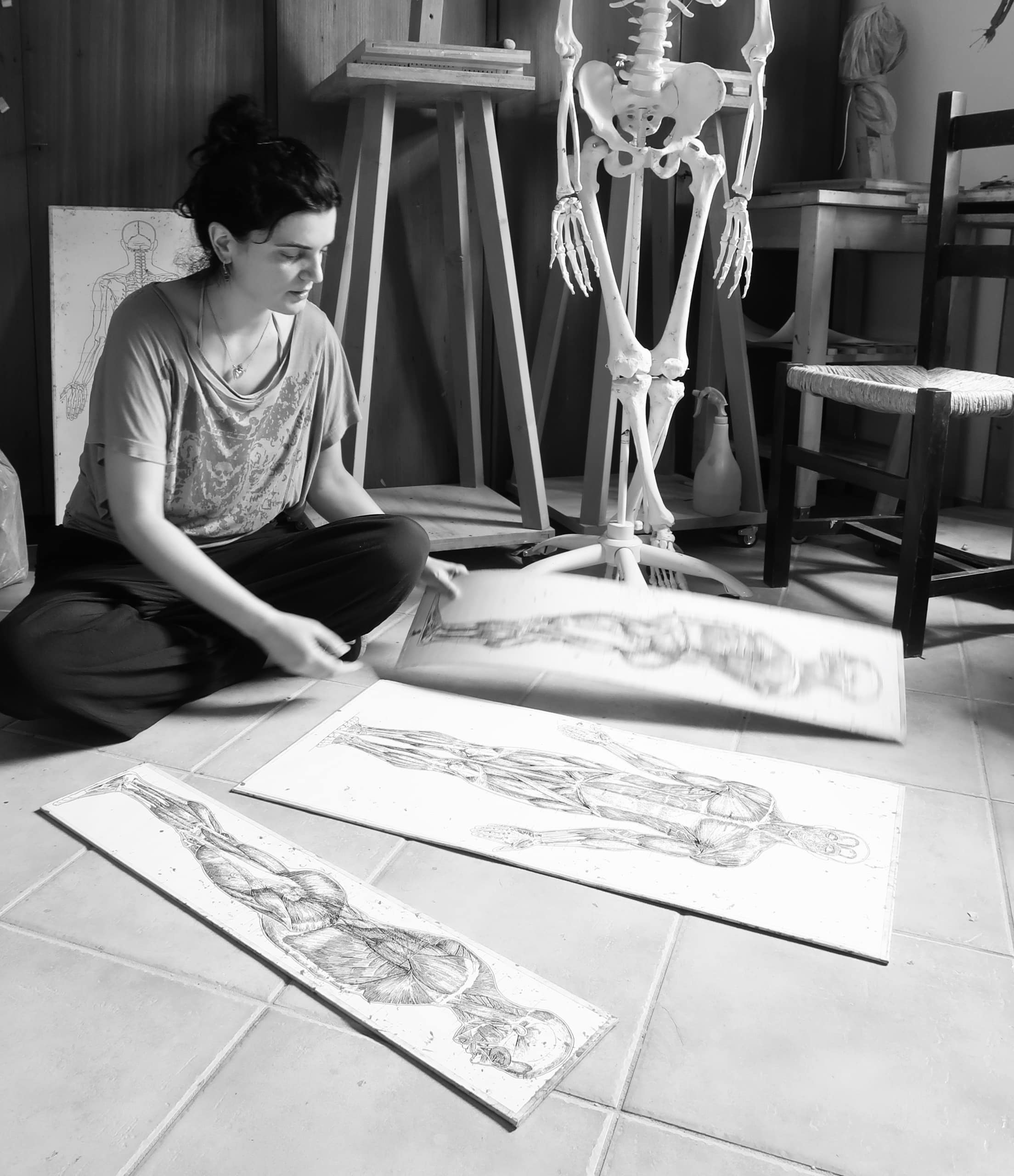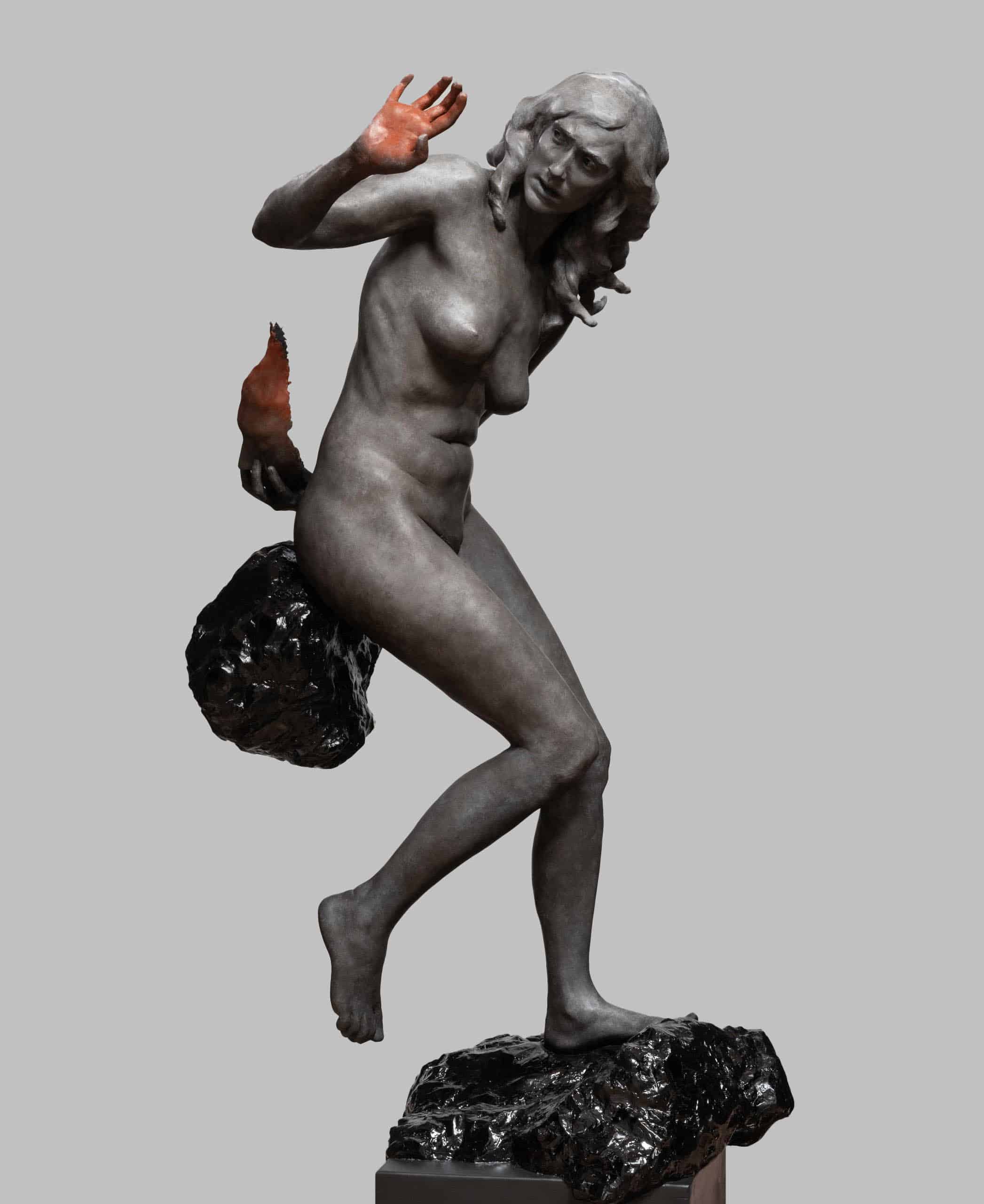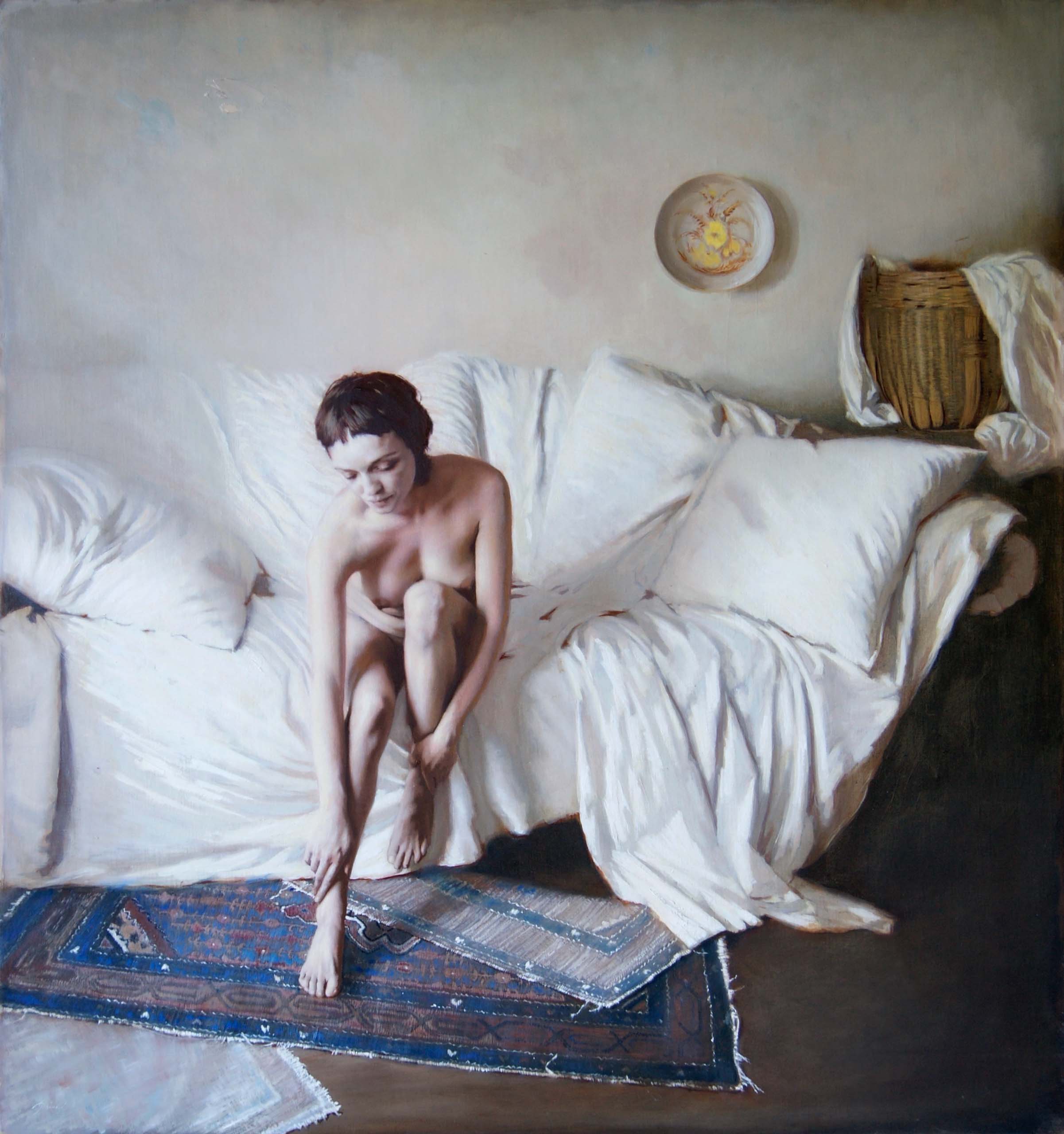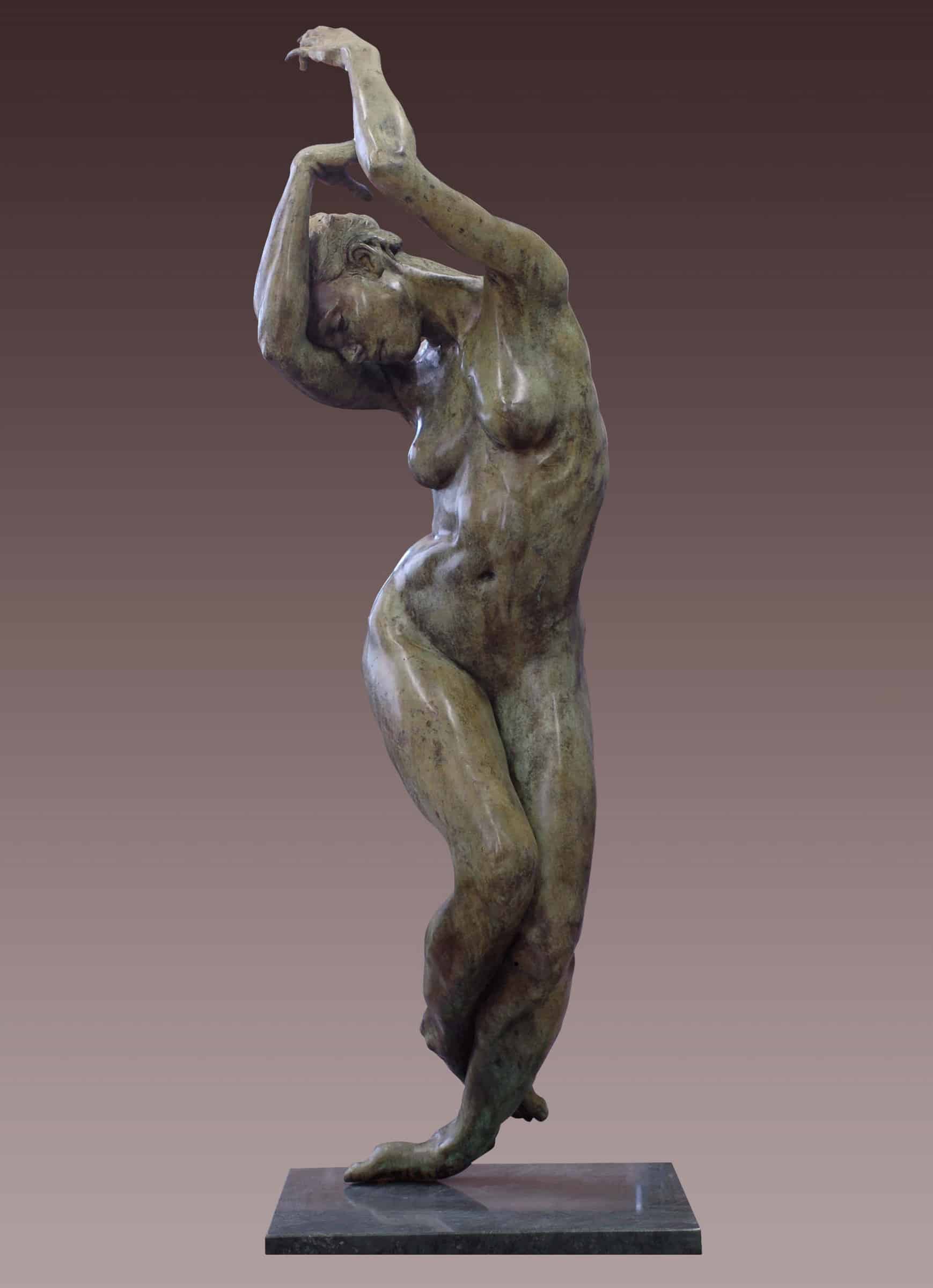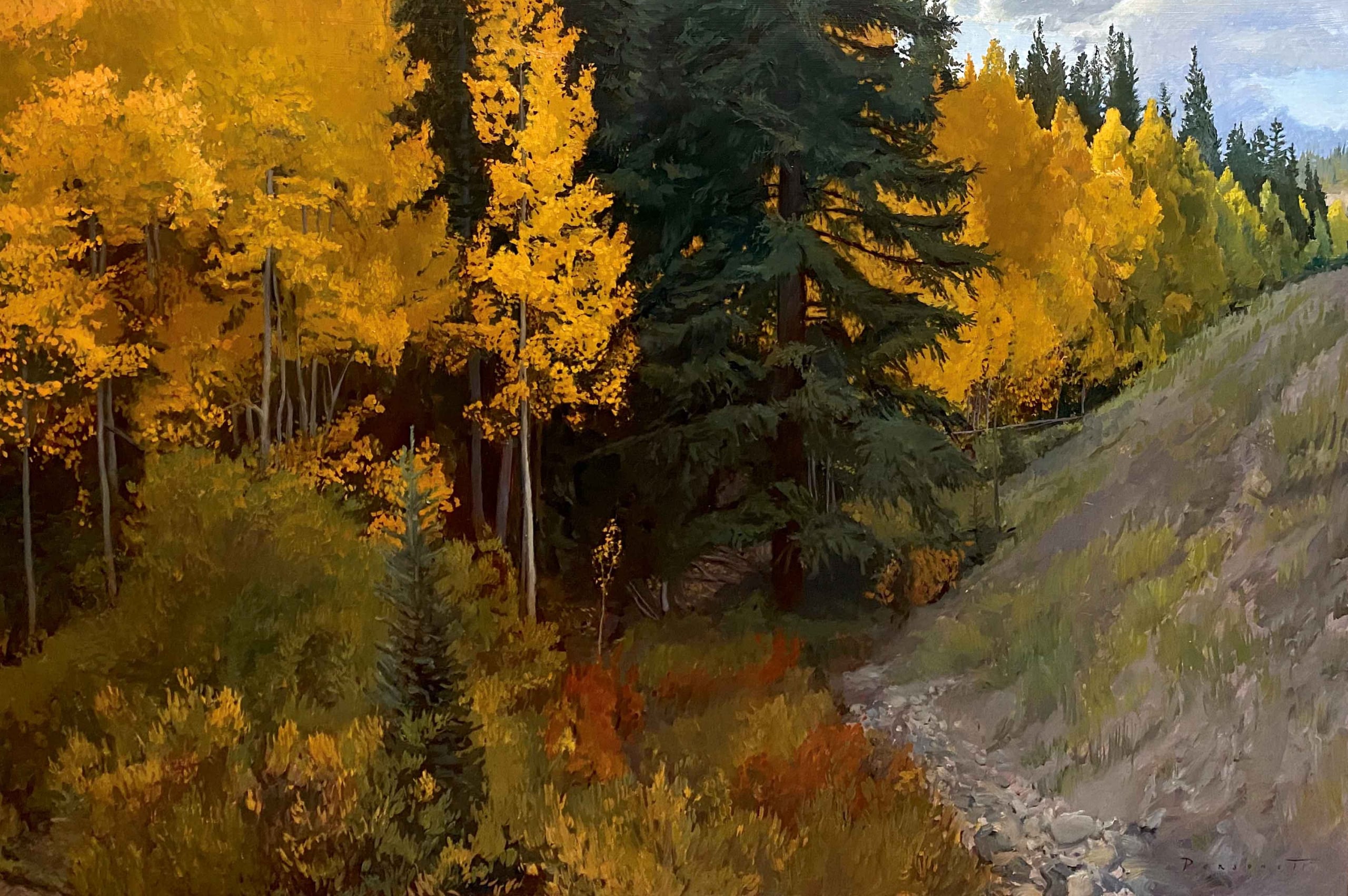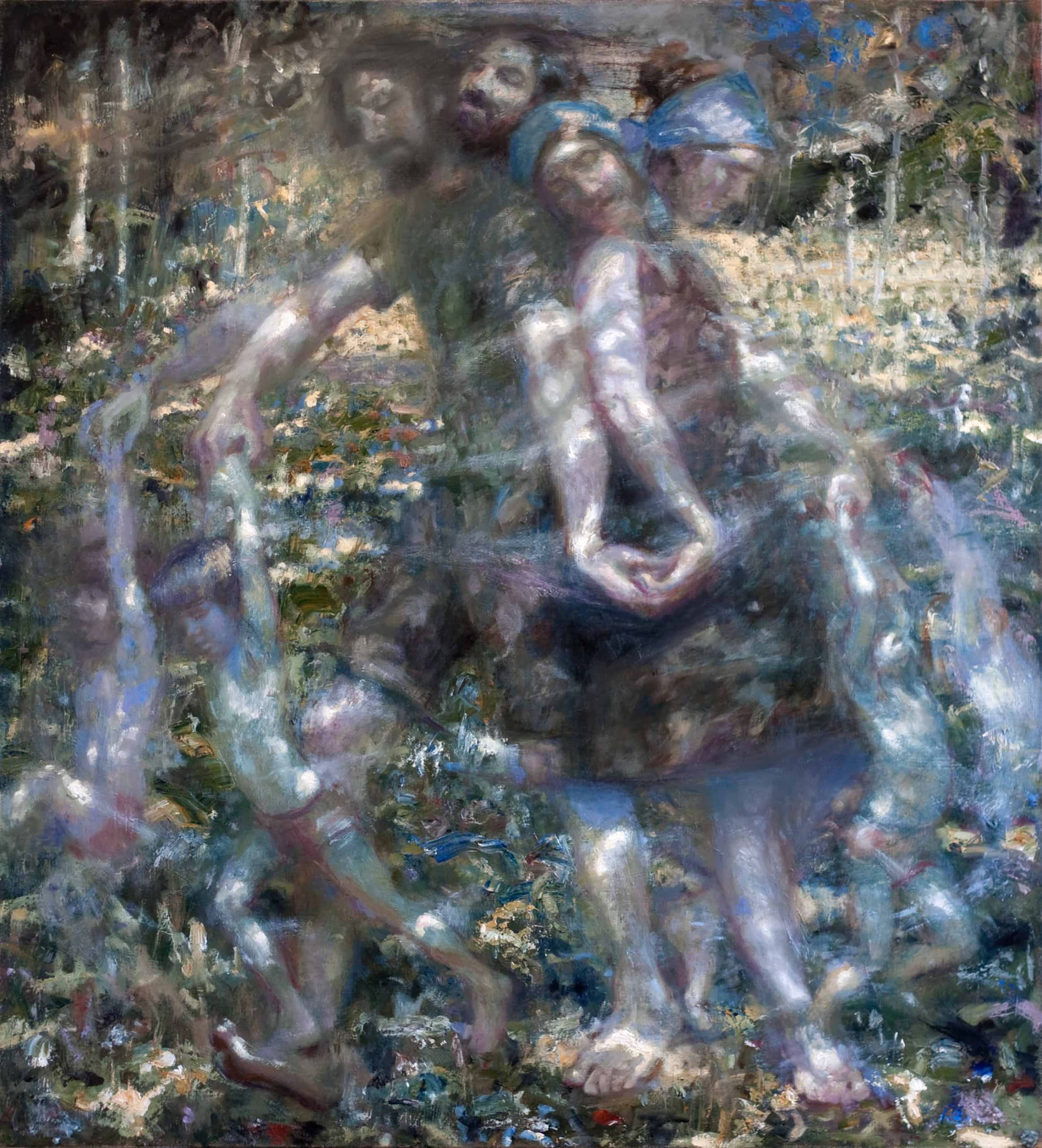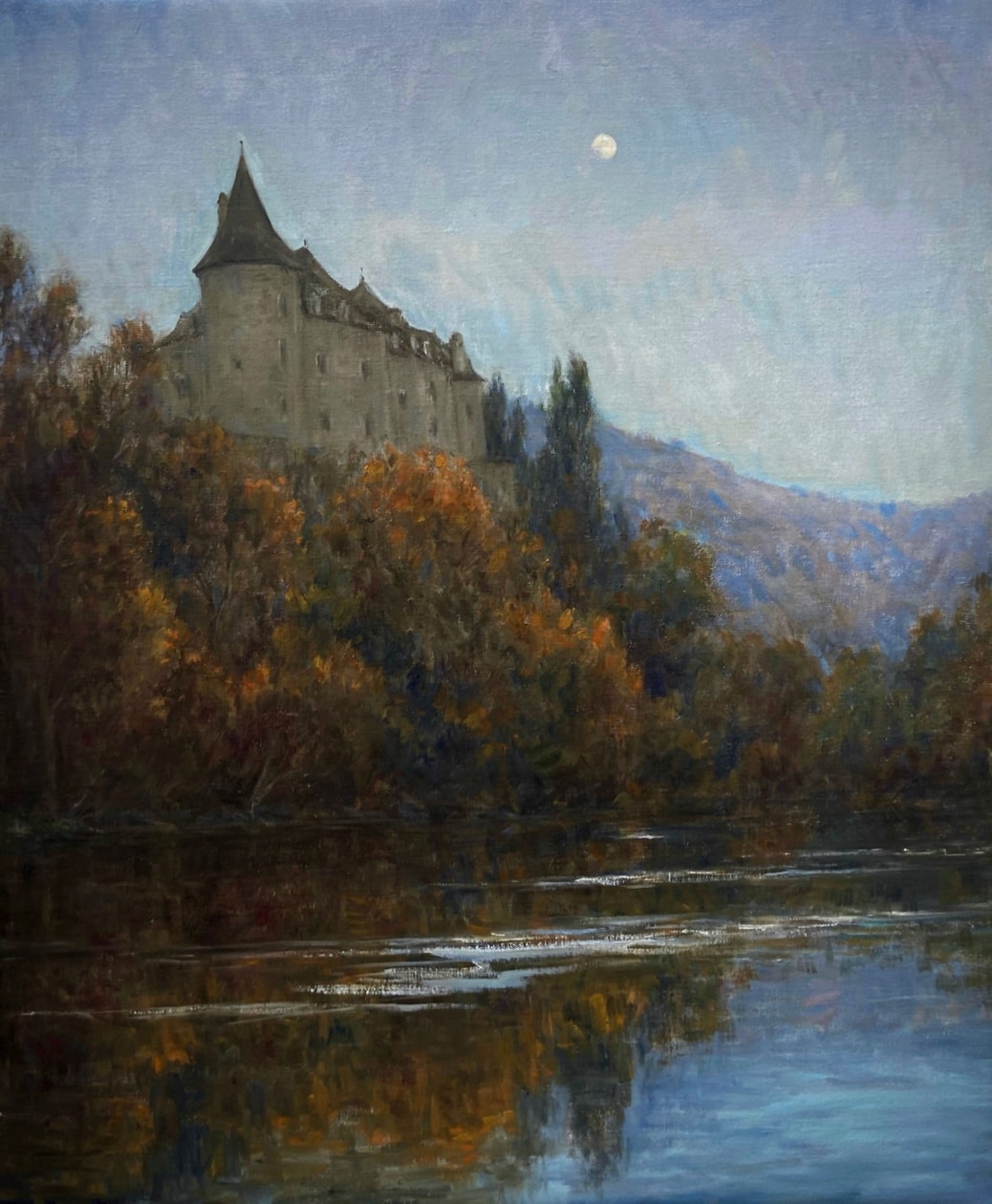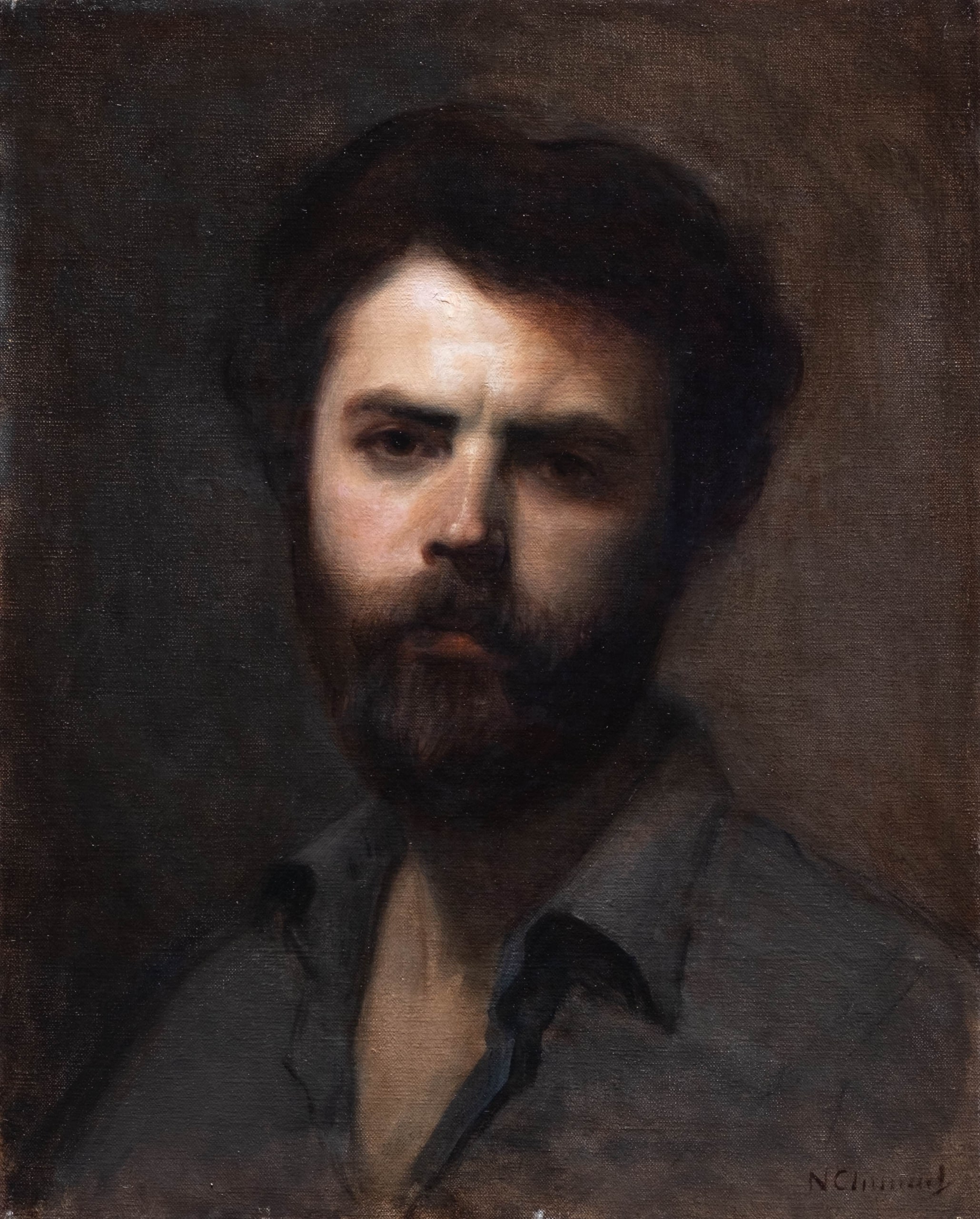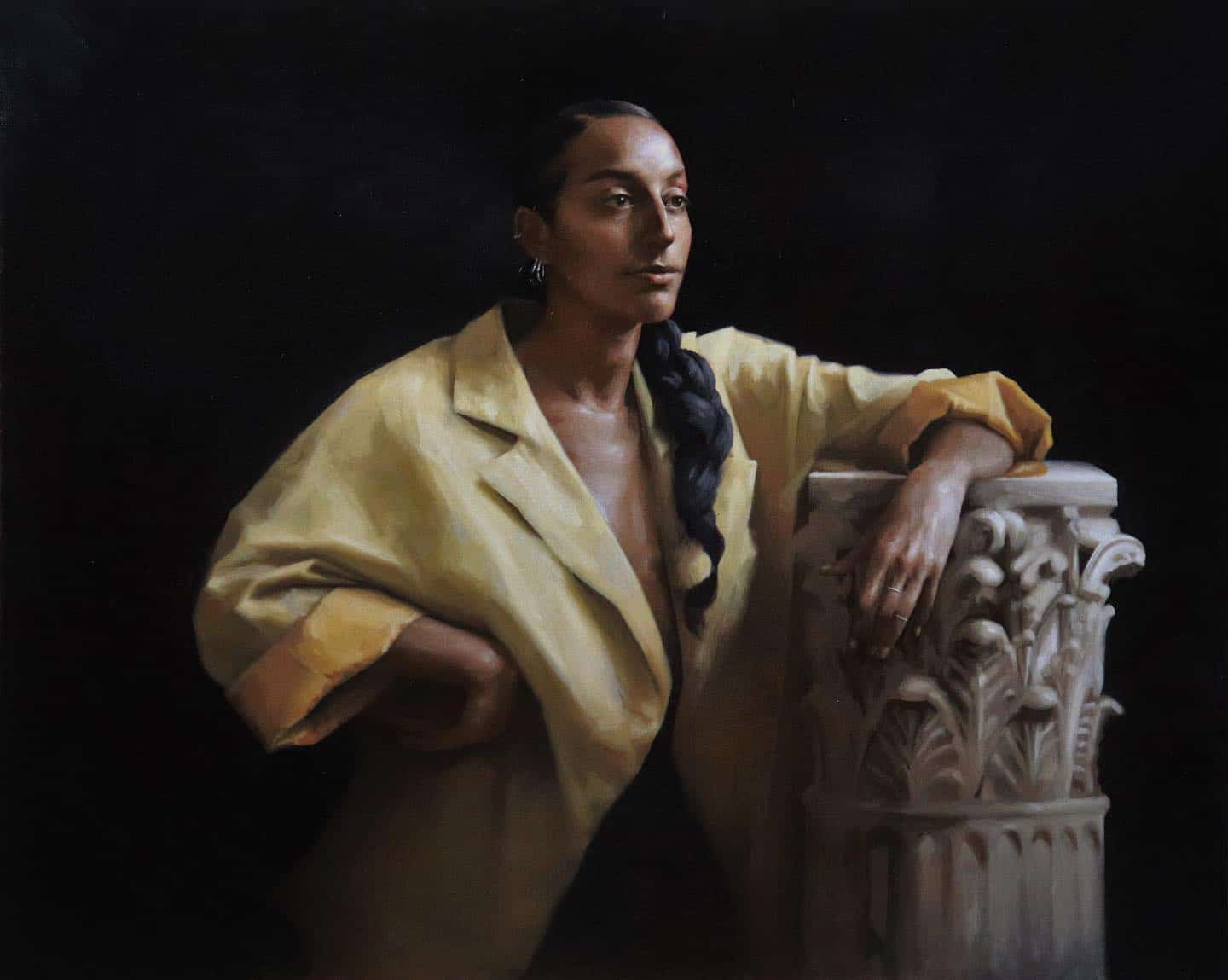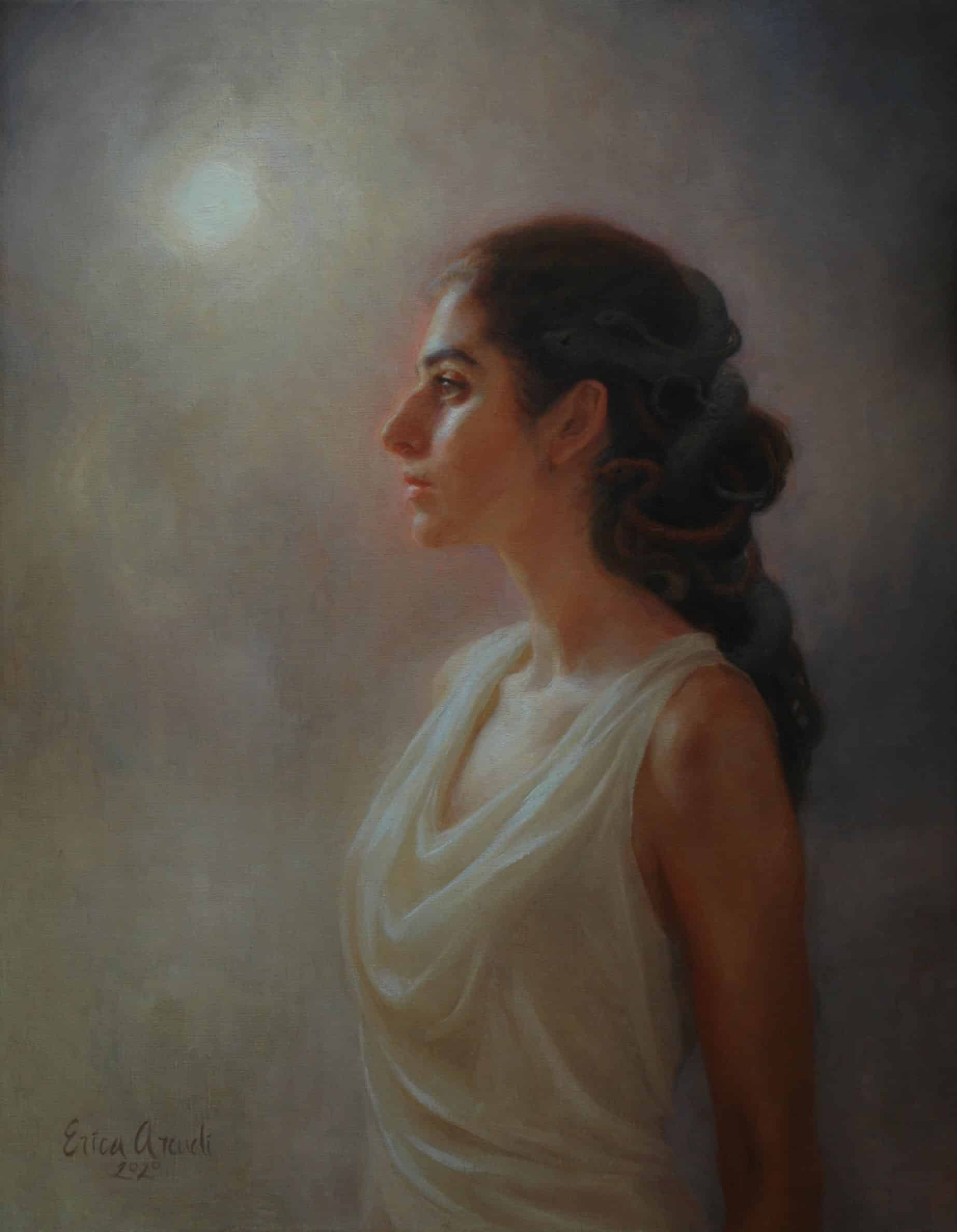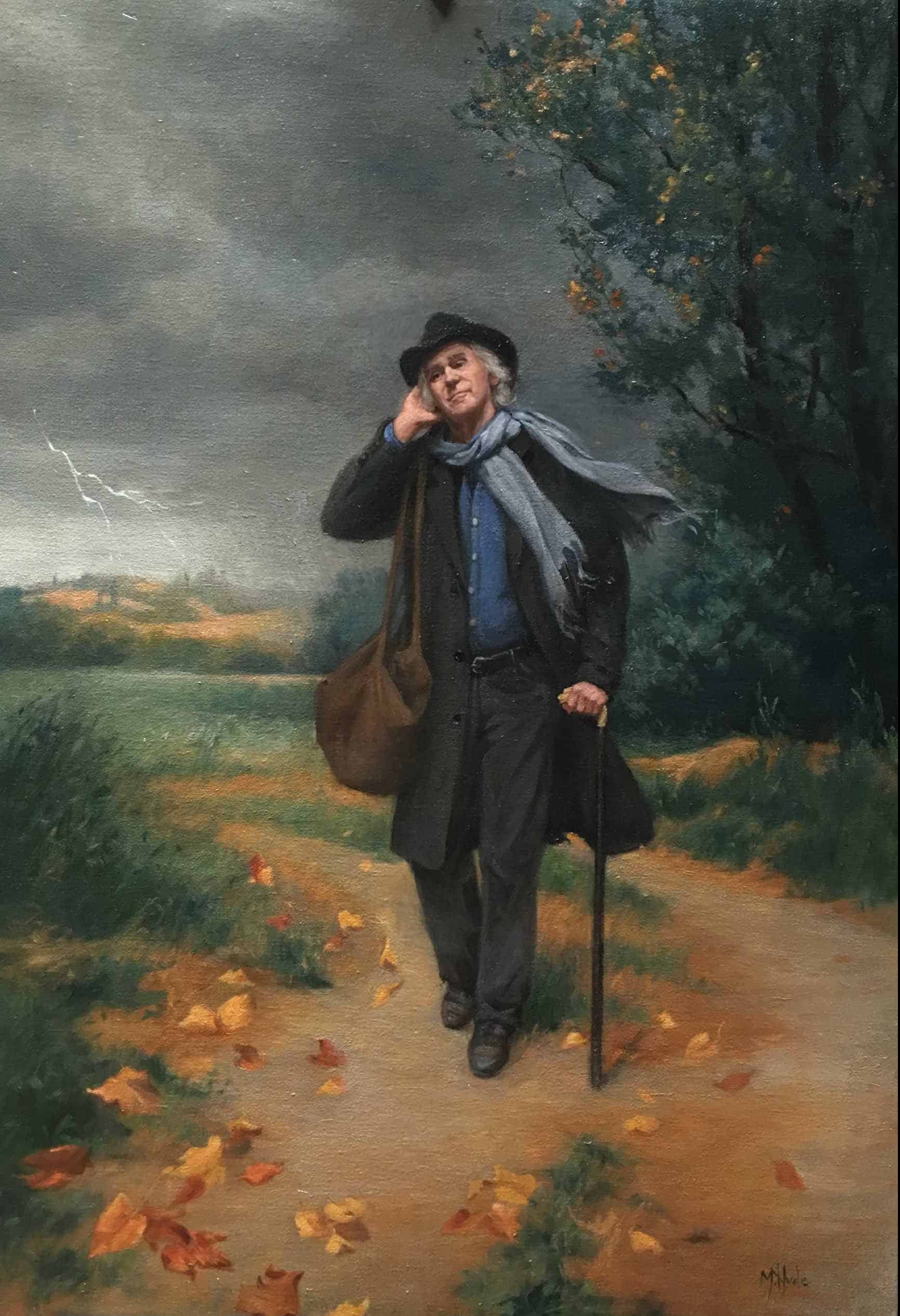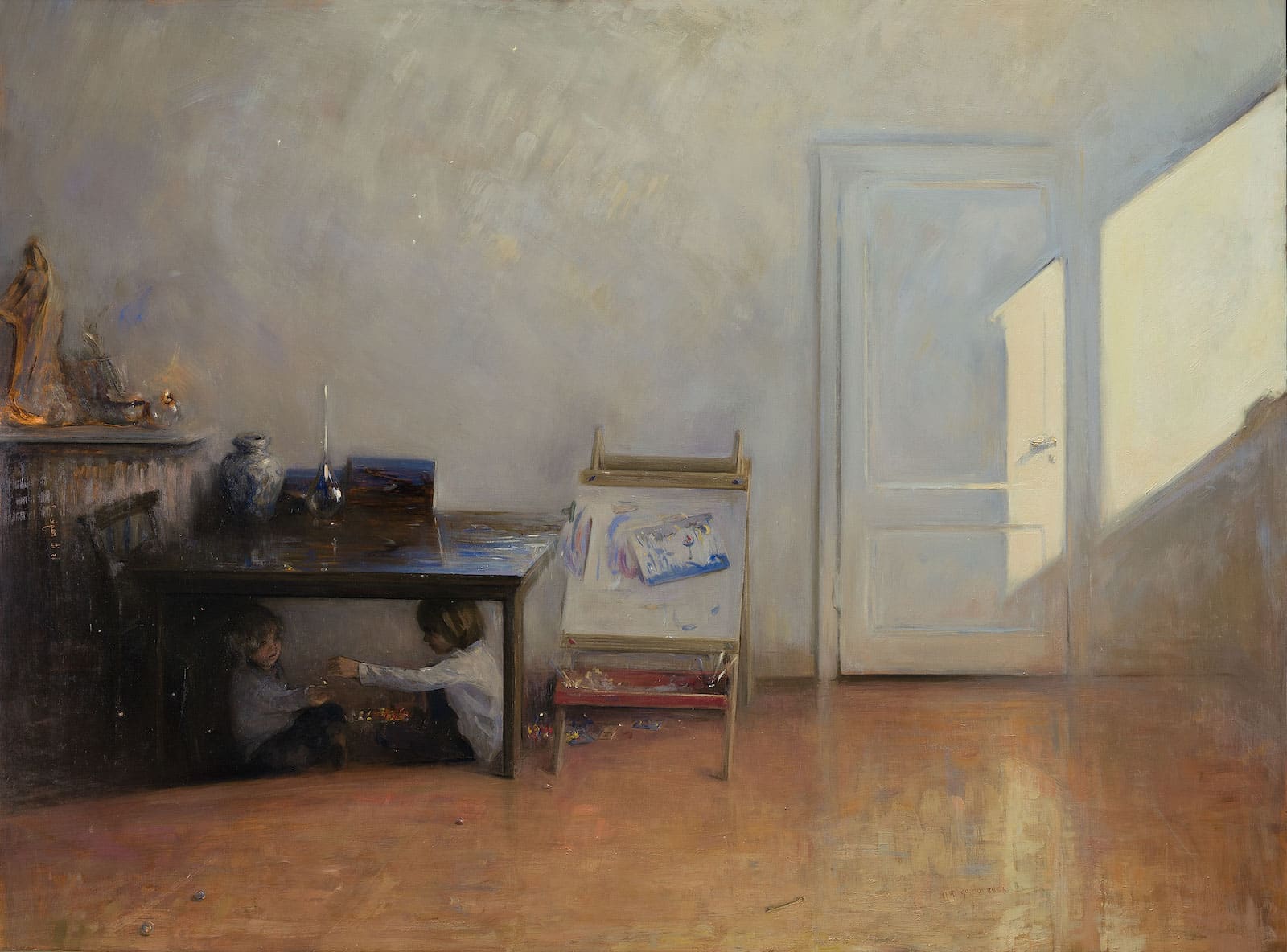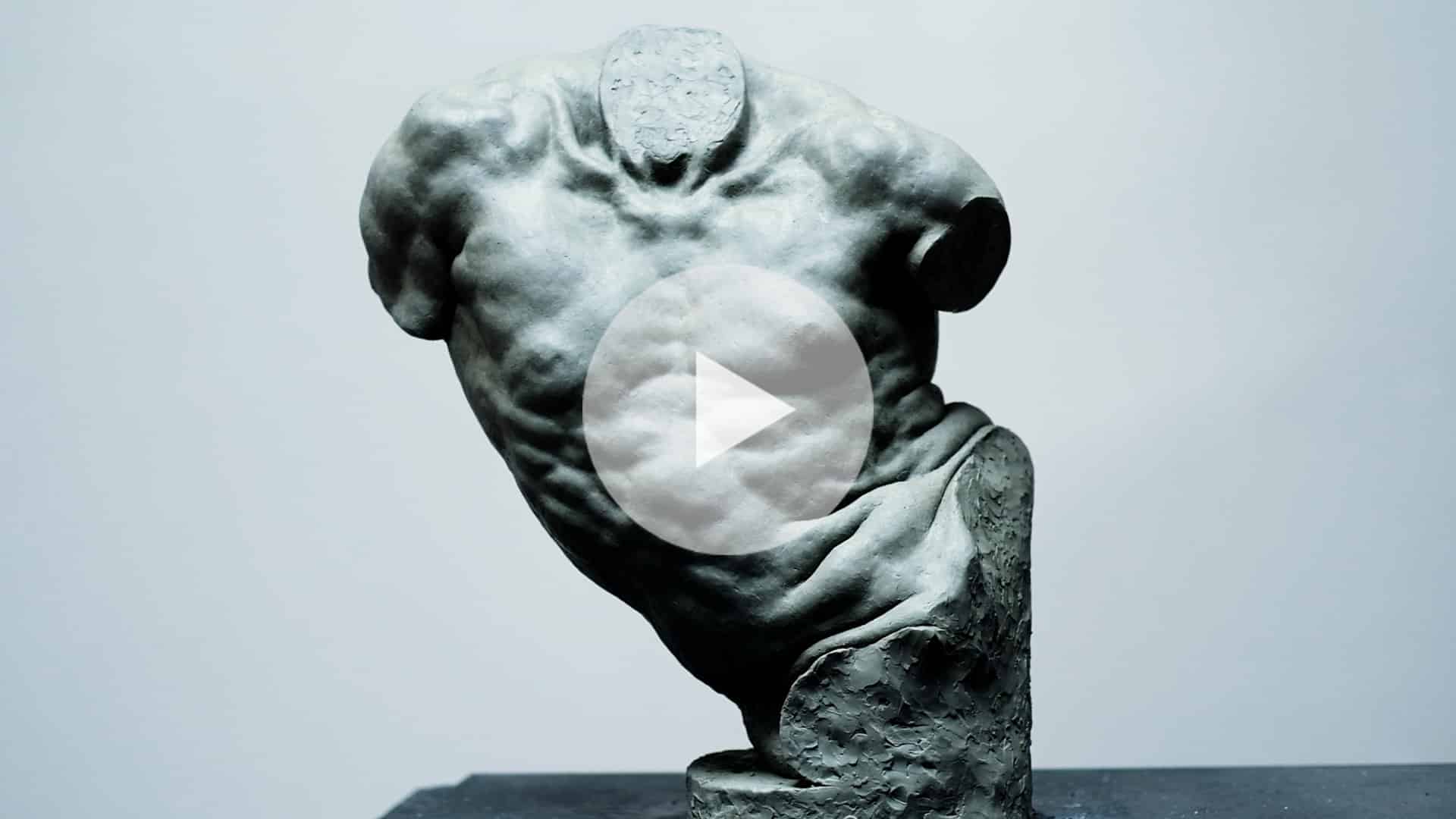March 18, 2023 / Eye on the Collective
An Arrangement of White Freesias by
Jacky Chan
While painting this, I wanted to capture that sense of peace that I had associated with flowers growing up. As I continue to paint, these themes of experiences from childhood reoccur and become something I reflect on constantly.
Jacky Chan, “An Arrangement of White Freesias”, Oil on linen, 40 x 50 cm, 2022
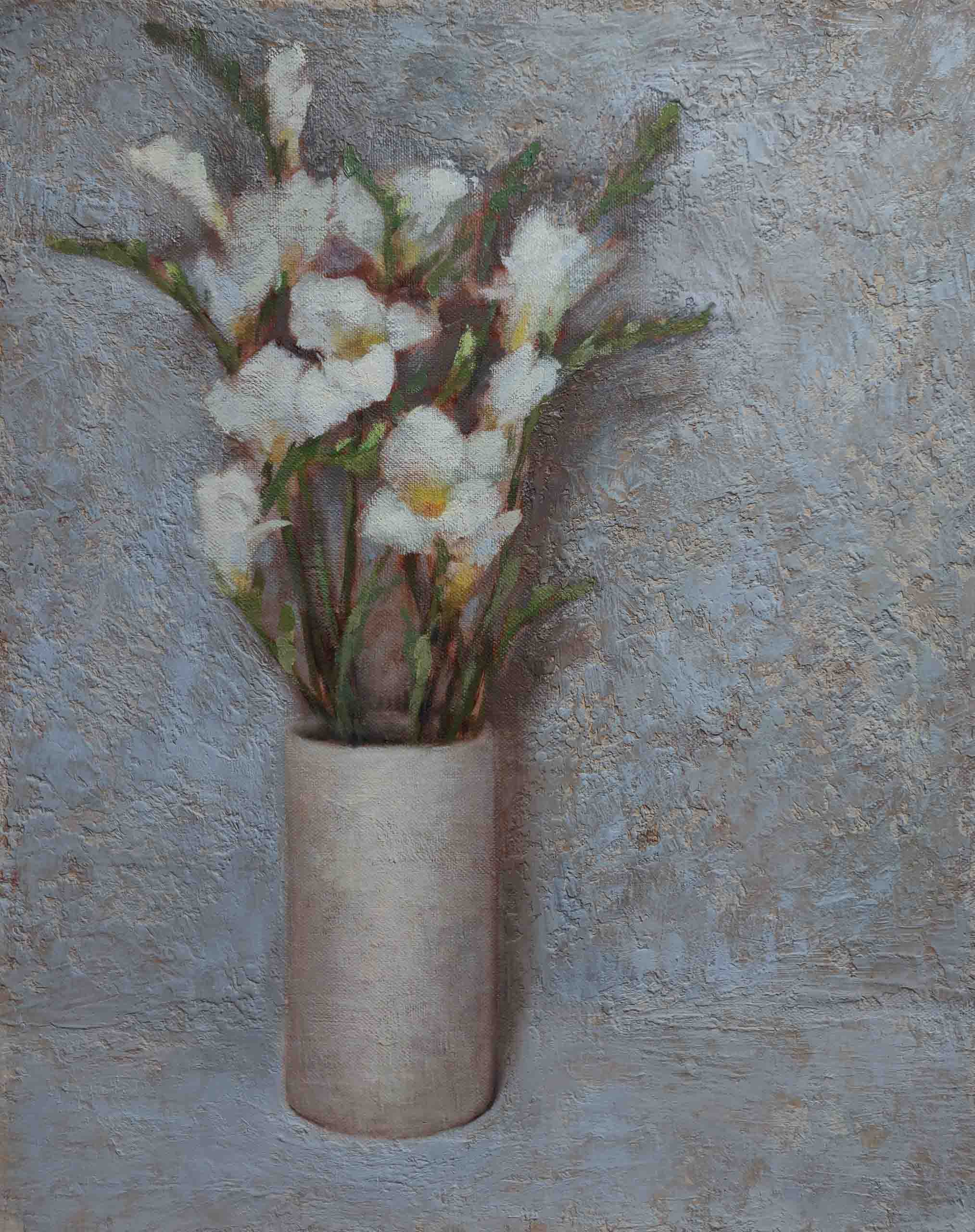
This week’s Spotlight on Art allows space for us to meditate on a quiet and thought out painting, An arrangement of white Freesias by The Florence Academy of Art graduate and former instructor Jacky Chan.
This artwork pulls much of its visual language from the wellspring of art history and was inspired by circumstance and a love for the peaceful nature of flowers. Included below are words from the artist about why they were drawn to this specific composition, how their recent circumstances influenced their choices, and many sources of inspiration in painting style, subject, and composition along with images of this painting and another made in the same vein in process. We hope you enjoy taking a little time to “stop and smell the freesias.”
“After studying and teaching painting in Florence for 5 years, I left and began setting up a working studio space in Central Queensland, Australia. I found myself in an environment with little to no models and had to re-evaluate what I would paint; it led me to look at more landscapes and still lifes.
I became drawn to several floral paintings by artists that I had been interested in: Fantin Latour, Abbott Thayer, Maria Oakey Dewing. These inspired me to further explore painting floral arrangements, in particular, white flowers.
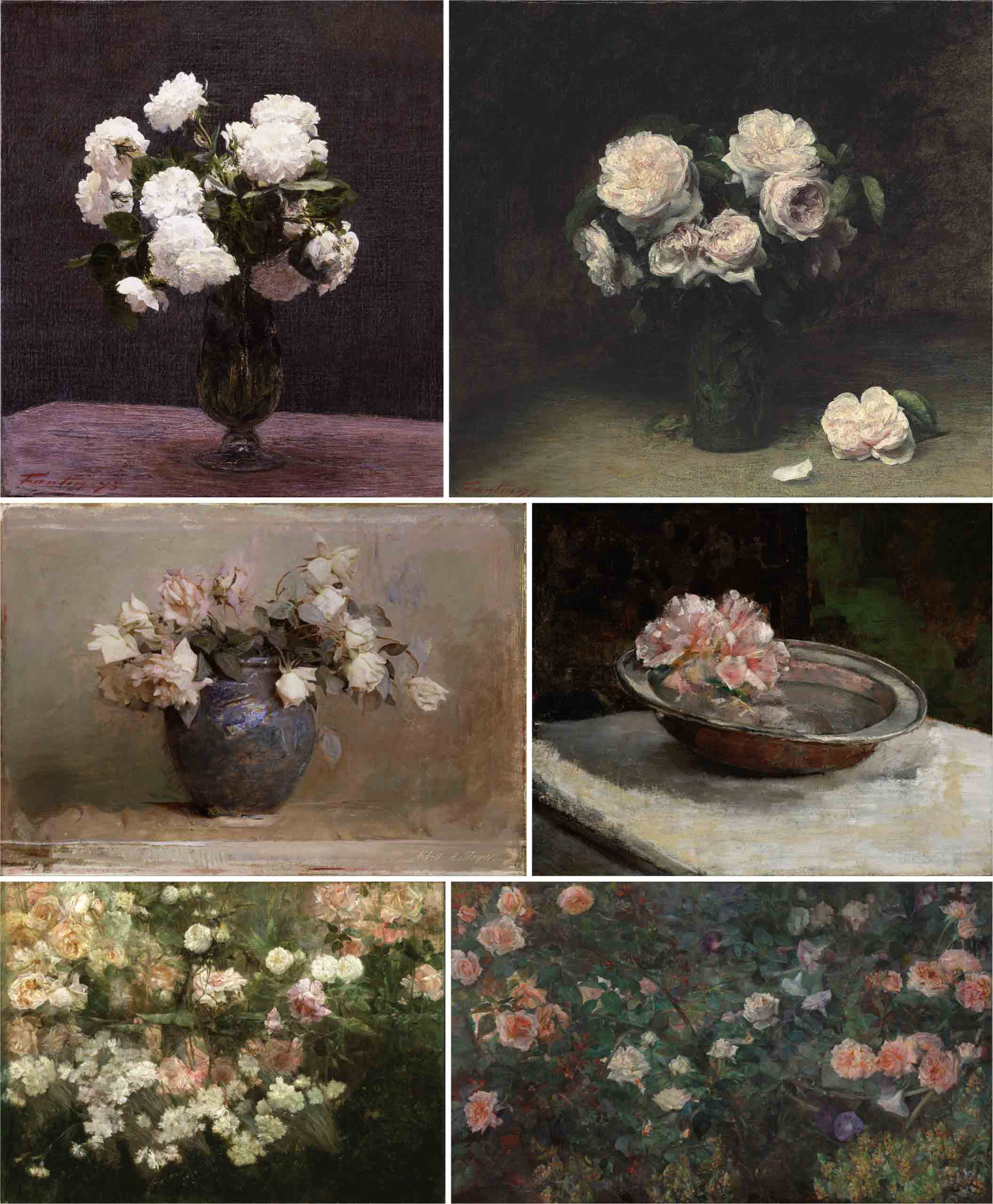
A selection of floral paintings by
Fantin Latour, Abbott Thayer,
and Maria Oakey Dewing
There has always been an alluring and peaceful quality about them that fascinated me from when I was younger. I would always see these (usually lotuses, peonies and chrysanthemums) in ponds and temples around Asia.
While painting this, I wanted to capture that sense of peace that I had associated with them growing up. As I continue to paint, these themes of experiences from childhood recur and become something I reflect on constantly.
Though my process differs from painting to painting, this is a common way I approach the start of a floral still life:
In keeping with the theme of white flowers, I found a bunch of Freesias at the local produce shop. I start by finding a vessel that compliments the rhythms of the flowers, in this case, a tall vase to further highlight the elegance in them and allow for a composition to draw your eye up.
I spend quite some time in this stage to arrange the flowers, oftentimes cutting the stalks to the lengths I want, so the focus doesn’t only sit on the top.
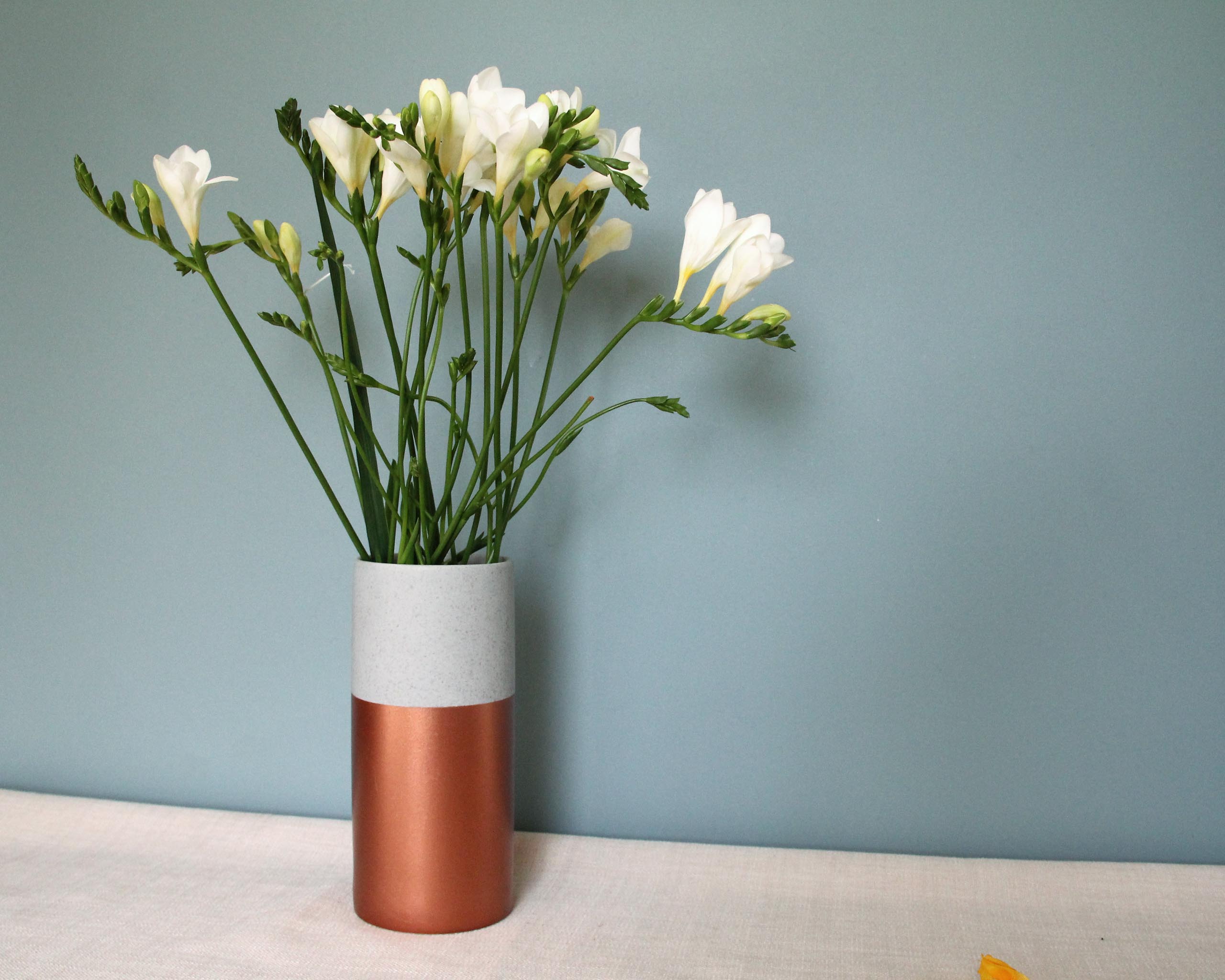
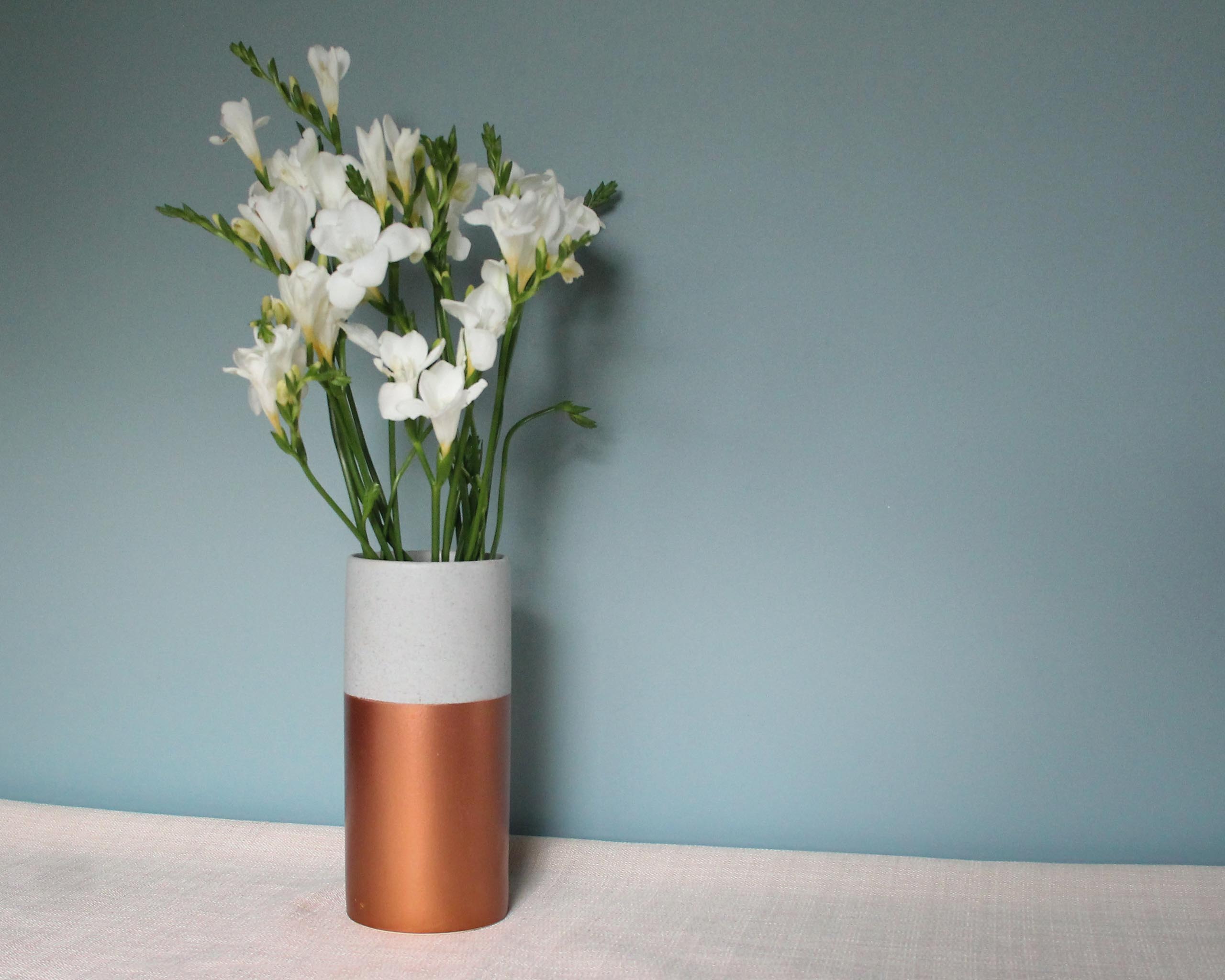
A before and after look at Jacky’s arrangement after cutting the stems for more variety in length.
During this stage, I like to find different inspirations in the books that I have, not necessarily limited to the subject matter I’m painting. In this series of white flower paintings, in addition to floral and still life compositions by Chardin or Fantin Latour, I also looked at landscapes by Monet and Whistler for colour harmonies, and cloud paintings by Emil Carlsen for composing white objects. I find doing this helps to break the monotony of only looking at precedents of whatever it is you paint.
A view of reference materials
used as inspiration for
“An Arrangement of White Freesias”
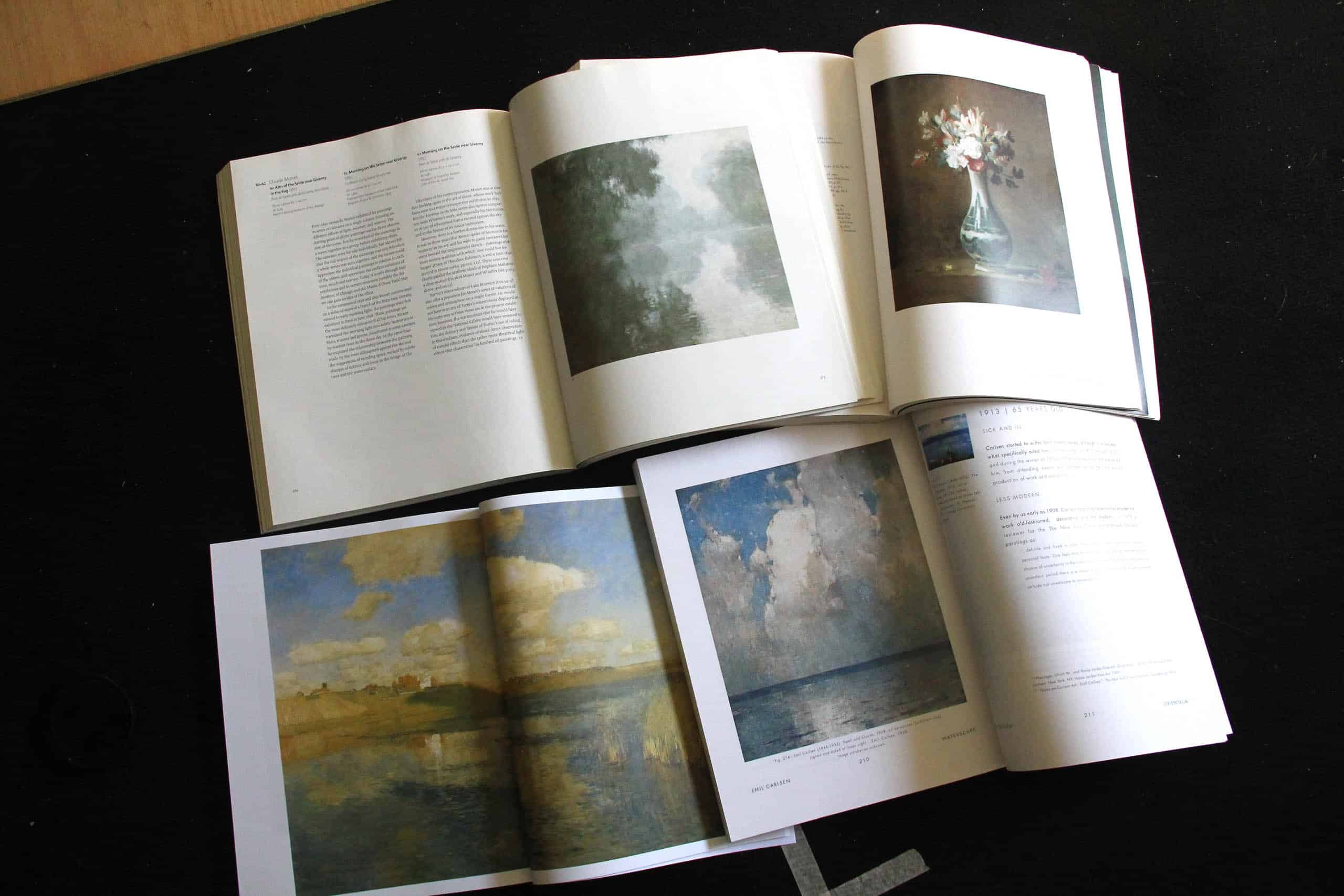
A view of reference materials
used as inspiration for
“An Arrangement of White Freesias”
I always have some linen canvases in standard sizes that I prepare myself, especially since I personally find it difficult to buy a surface that I like to paint on. From there I roughly sketch in the composition, specifically the table line, the vase and one or two flower shapes that I want the focus to be on. I do this in chalk, partly because it shows better with the darker ground I have and it also doesn’t affect the oil paint that goes on top of it as much as charcoal does.
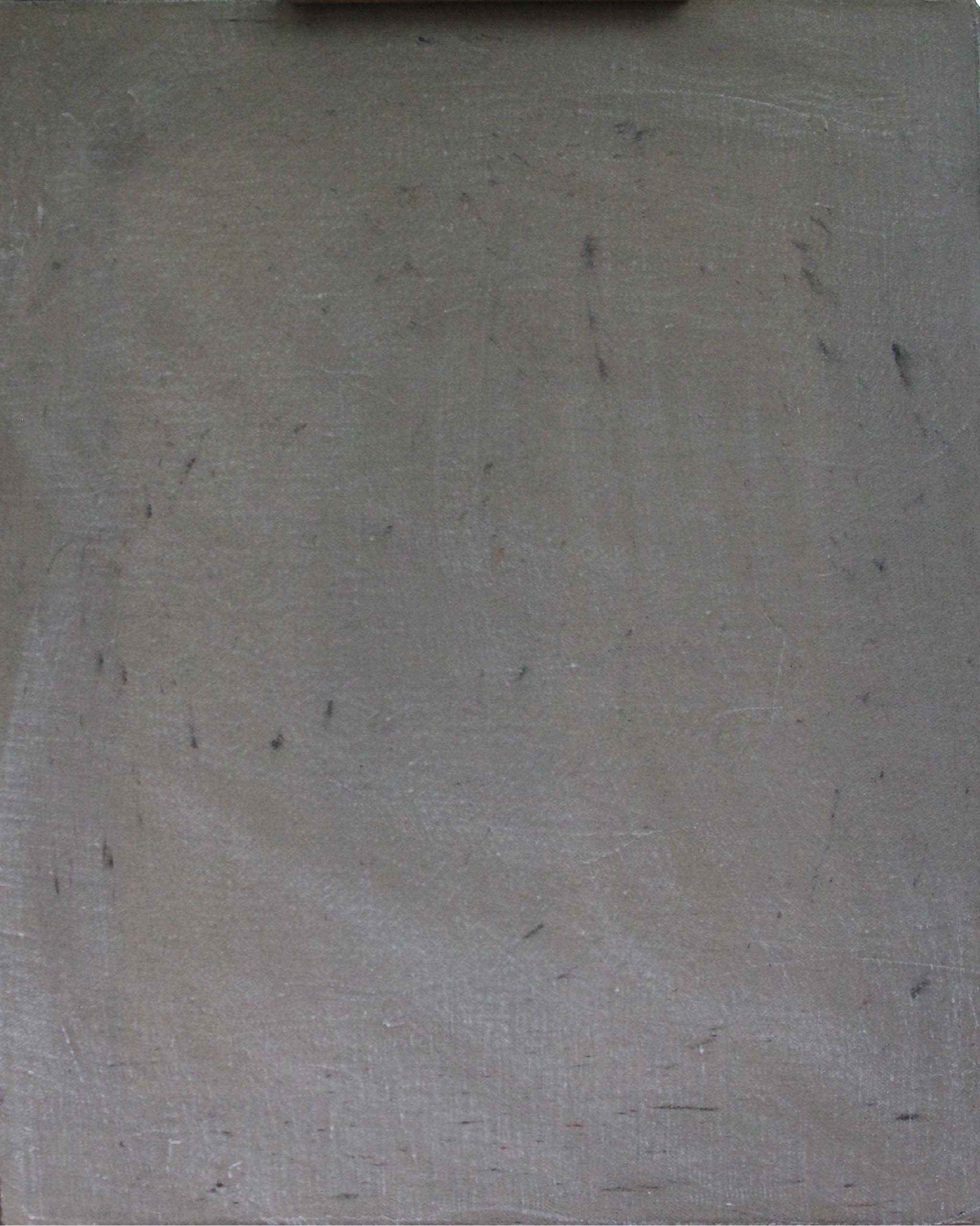
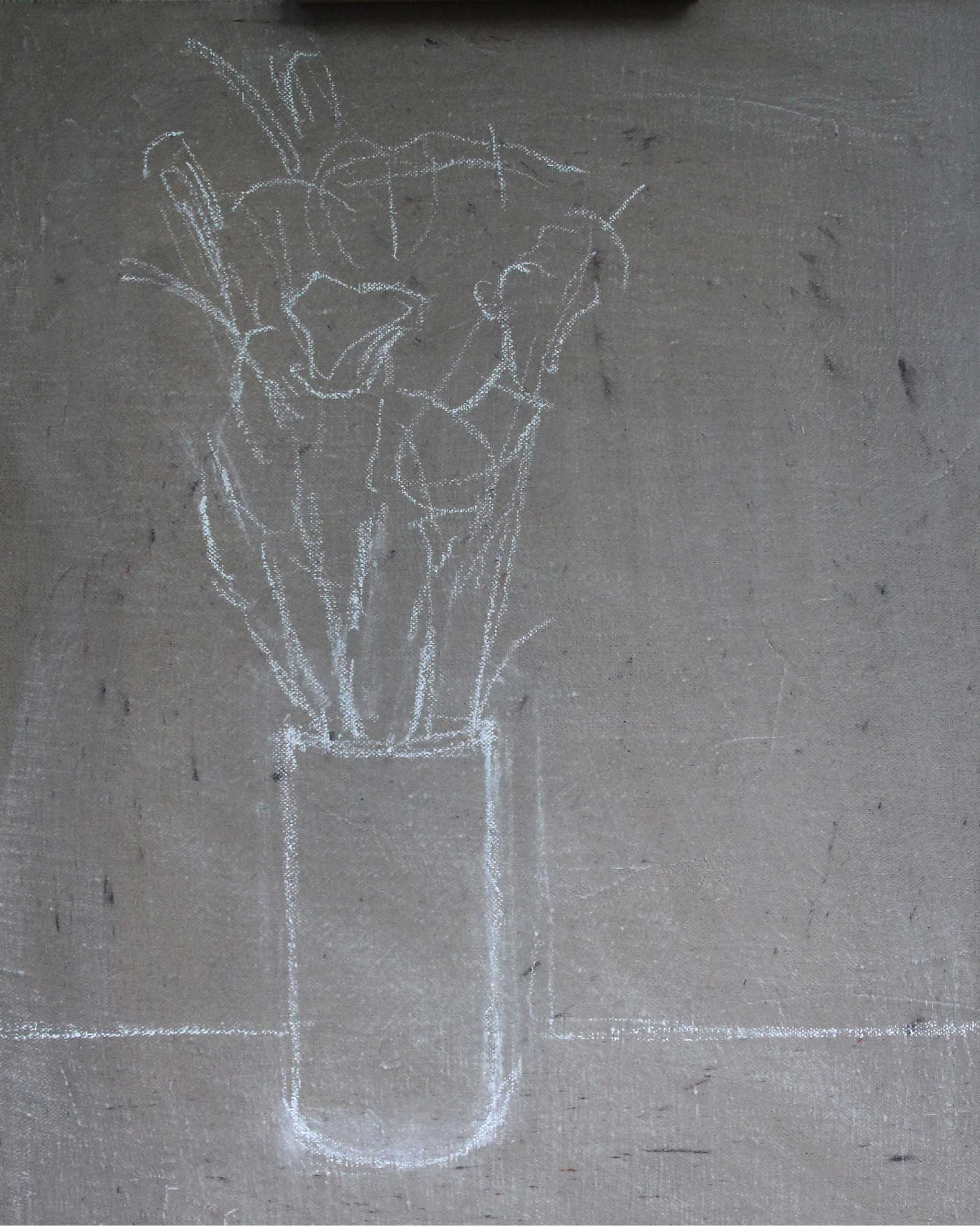
Before and after the initial block-in of the composition with white chalk
The block-in stage happens quite quickly, especially with flowers because of the limited time you have before they begin to change and wilt. I plan out different areas to paint so that I’m able to work on it consecutively without working on top of the same area as the previous day. In this example, the flowers were blocked in, then the next session focused on the stalks and background, and then the following session returned to the flowers.
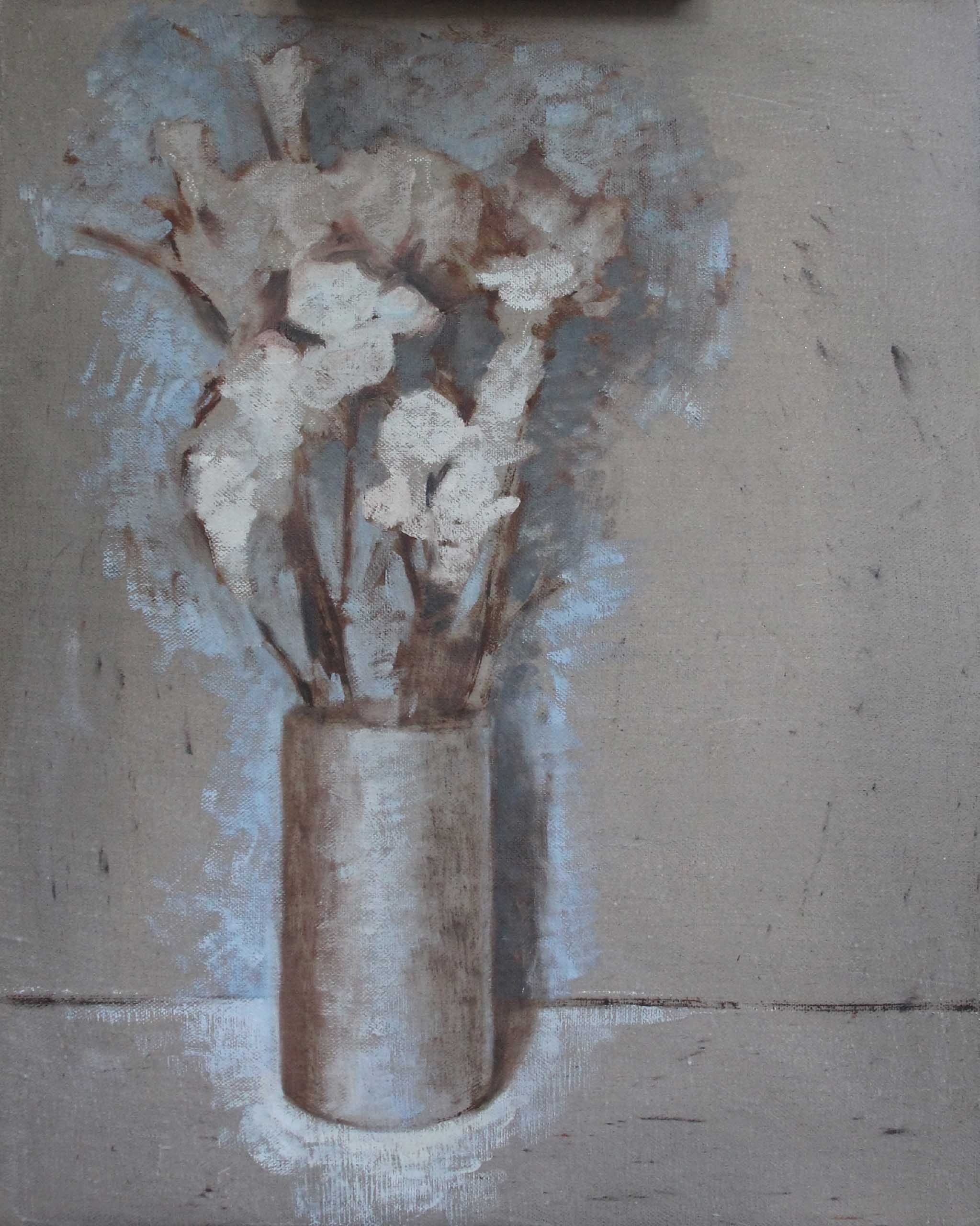
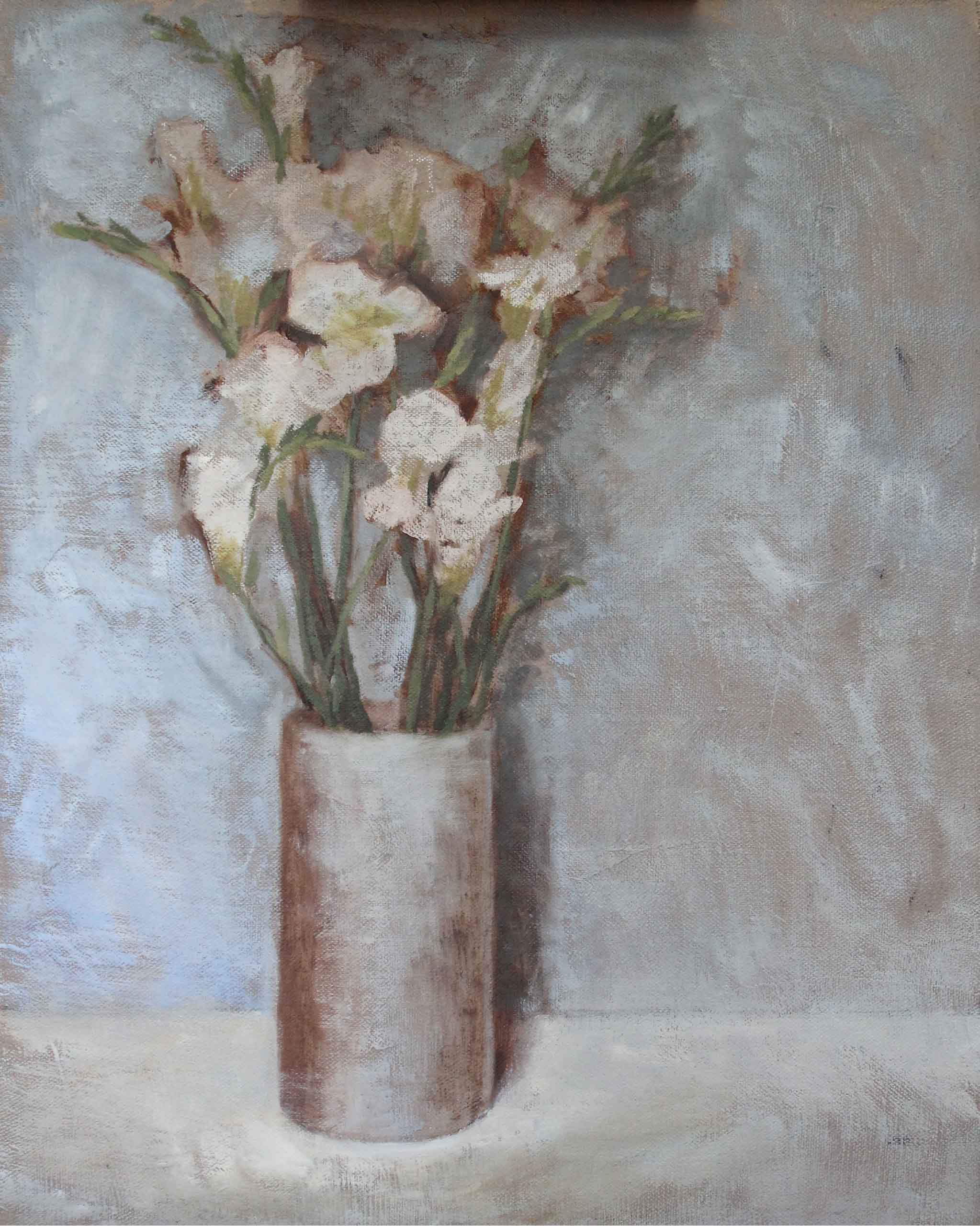
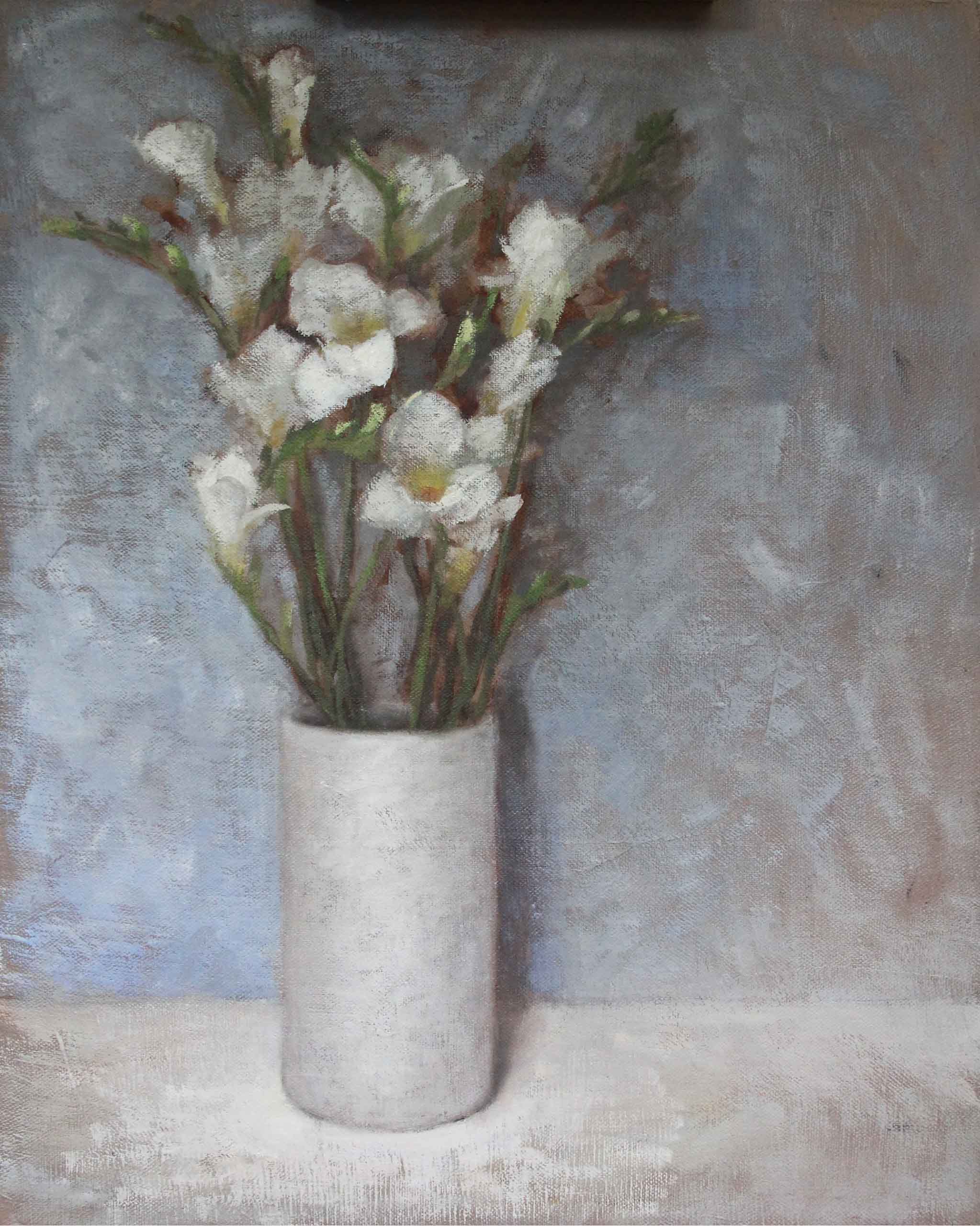
Developmental stages of the painting
With the textures, they’re built up over time, which tends to happen after the flowers have gone. This allows me to work on the painting as an image, and not solely focus on what I have set up. I like to experiment with different methods of paint application to see what outcomes I get. Most commonly with sanding the painting (always in a ventilated area and not on paintings with lead white), as well as using palette knives, brayers, sponges etc.
Detail of the textures
achieved by Jacky
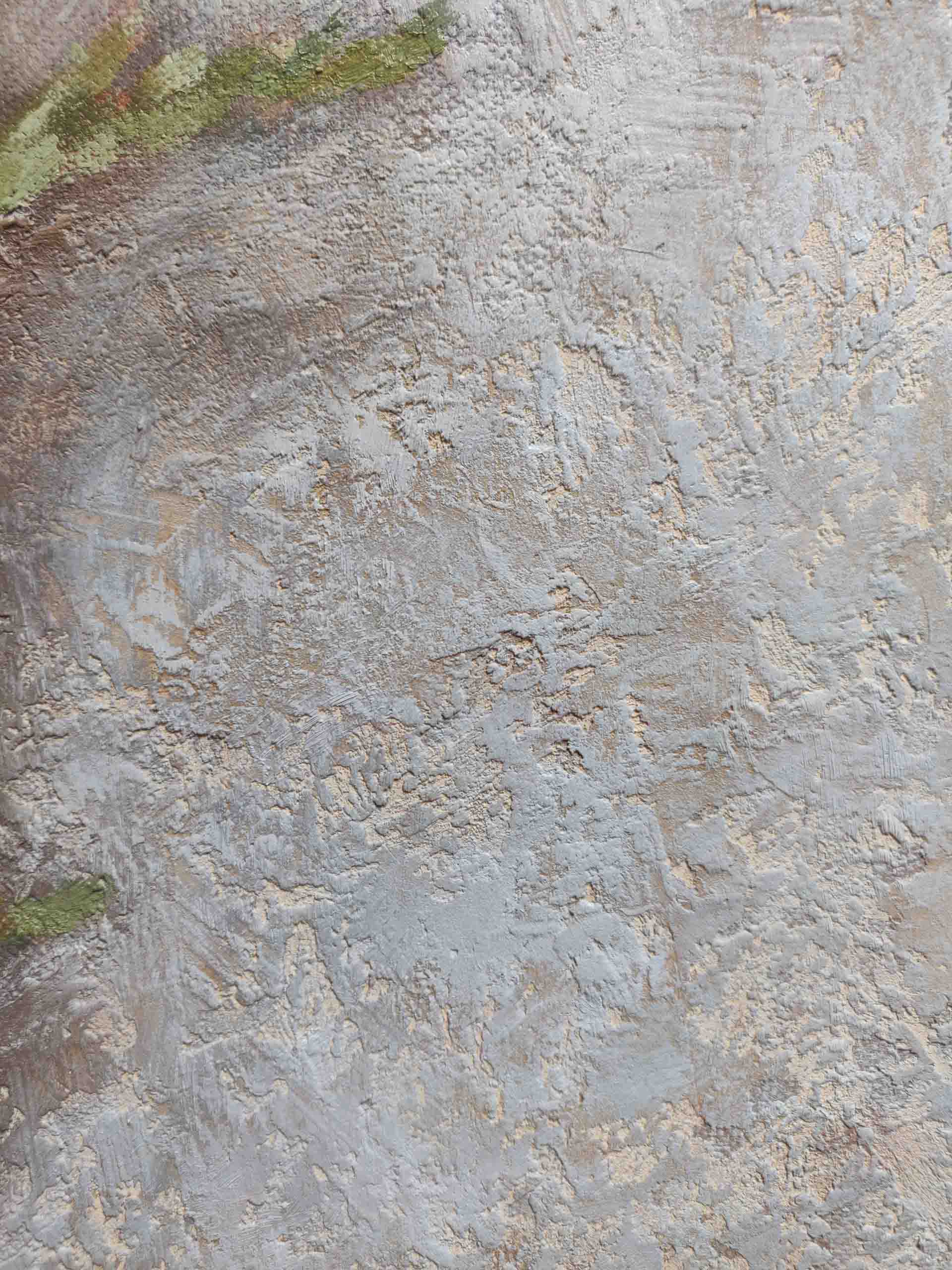
Detail of the textures achieved by Jacky
In this particular case, I used a type of oil painting putty to recreate something similar, which also takes multiple layers, but because it is oil based, it takes longer between layers to dry. The finished texture consists of three layers that alternate between warmer and cooler temperatures.
A lot of the joy for me in this happens throughout the process of making the finished painting, from preparing my own canvas, to finding flowers and arranging them, and then experimenting with different tools and materials to achieve a desired outcome. I often don’t know how my paintings will look when I begin, and for me, this presents itself as an exciting journey to uncover. I love the brevity of the subject and it pushes me to make decisions instead of mulling over them, and to fully appreciate something in its present.”
– Jacky Chan
More about Jacky Chan
Jacky Chan was born in 1988 in Borneo, Malaysia. He studied at the Royal Melbourne Institute of Technology where he graduated with a Masters of Architecture. After several years of working at an architecture firm, he decided to leave Australia and pursue the study of painting, and enrolled at The Florence Academy of Art, where he graduated in the painting program and was offered a 4th year residency. He continued to stay for two more years, teaching drawing in both the painting and sculpture program. Currently he is living and working in Rockhampton, Australia, where he continues to paint and teach.



